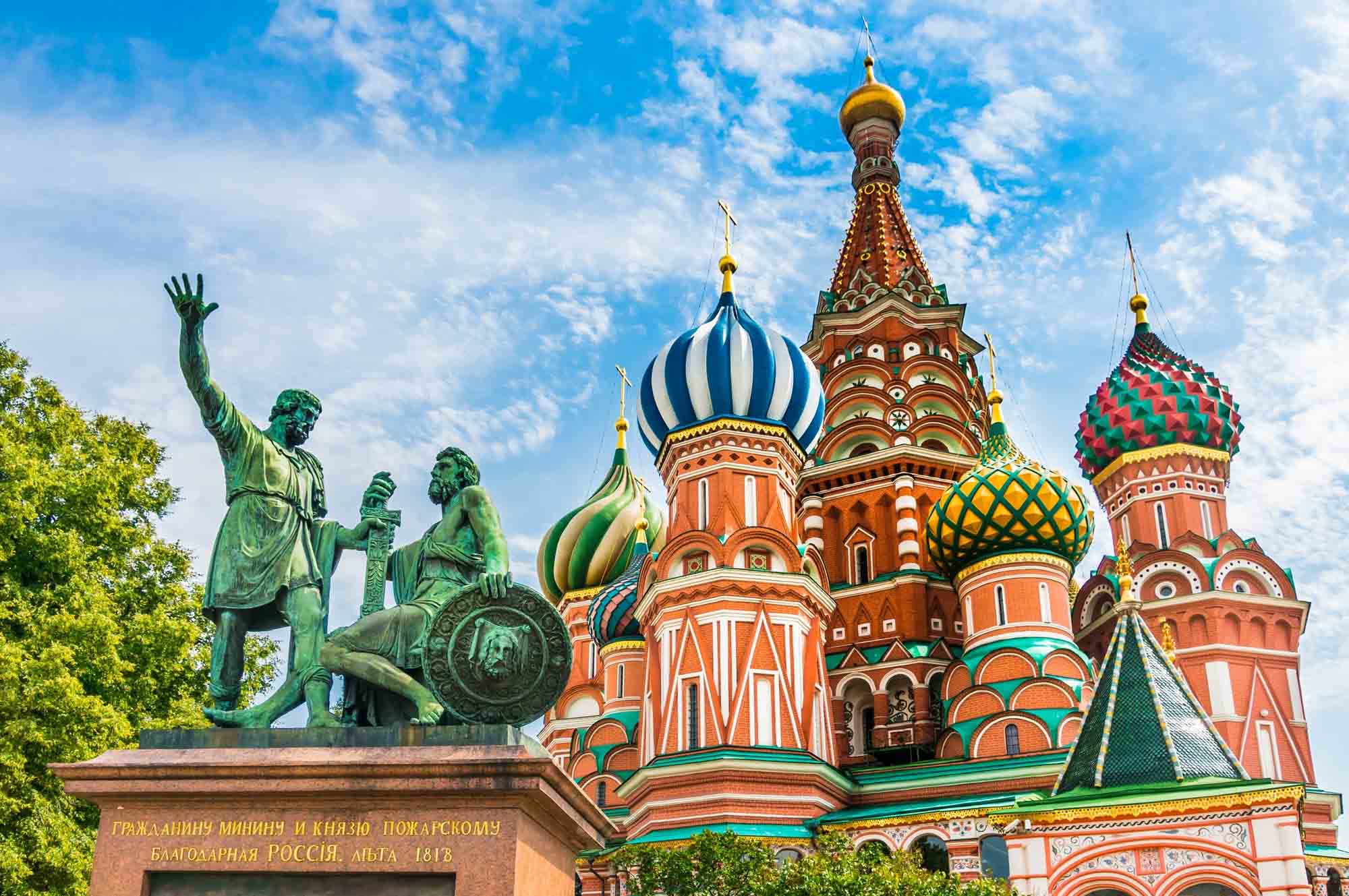
Moscow is the capital of Russia, one of the largest cities in Europe and one of the most important cultural and scientific centers of the world. At the famous Red Square you enjoy a unique architectural ensemble including the Cathedrals of St. Basil (1550s) and Our Lady of Kazan (1630s), the History Museum of Russia, Kremlin walls and towers, the Upper Trading Arcades (GUM), Lenin’s tomb and necropolis. During panoramic city sightseeing tour you will see also the Cathedral of Christ the Savior blown up by Bolsheviks in 1930s and rebuilt in 1990s as a symbol of new Russia, the New Maiden Convent – a fortress and monastic ensemble of the XVI c., a campus of the Moscow University and panorama platform at the Sparrow Hills, Moscow boulevards, the Theater Square with the world famous Bolshoi Theater and the Metropol Hotel – a pearl of the Modern style architecture.
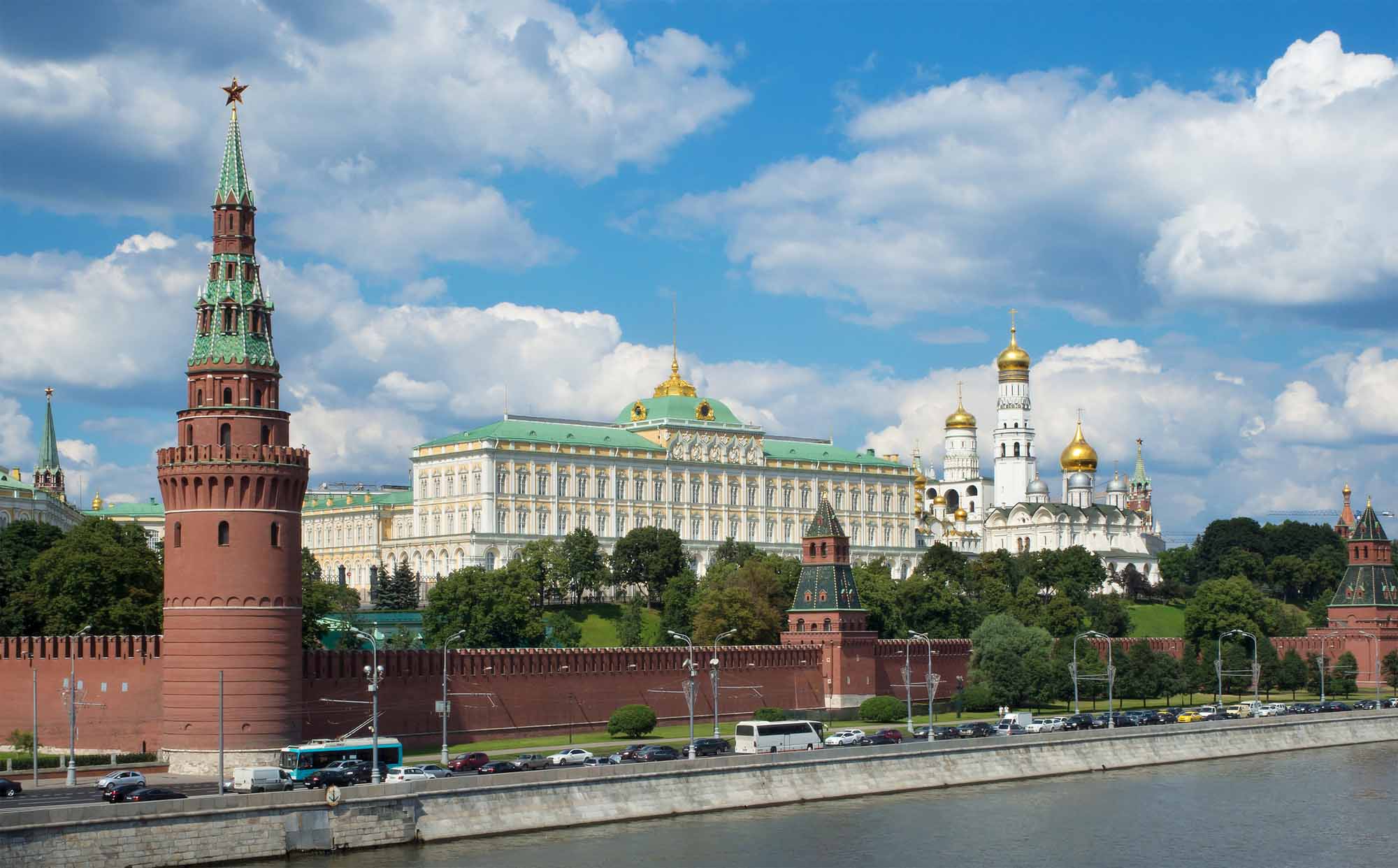
Moscow Kremlin is historical center of Moscow city and also historical and political center of Russian state. You will see the Cathedral Square – breathtaking architectural ensemble of the XV-XVII cc. including visit of one of cathedrals (the Annunciation Cathedral where Moscow and Russian grand princes and tsars were baptized, the Assumption Cathedral where they were crowned or the Archangel Michael Cathedral where they were buried), Bell the Tsar and Cannon the Tsar – stunning examples of casting of the XVI c., Grand Kremlin Palace (residence of emperors and contemporary president’s gala reception quarters), the Senate, the Arsenal and the Palace of Congresses specially built in communist times for XXII Congress of CPSU (1961) where new CPSU programme (plan of building of communism by 1980) was fixed.
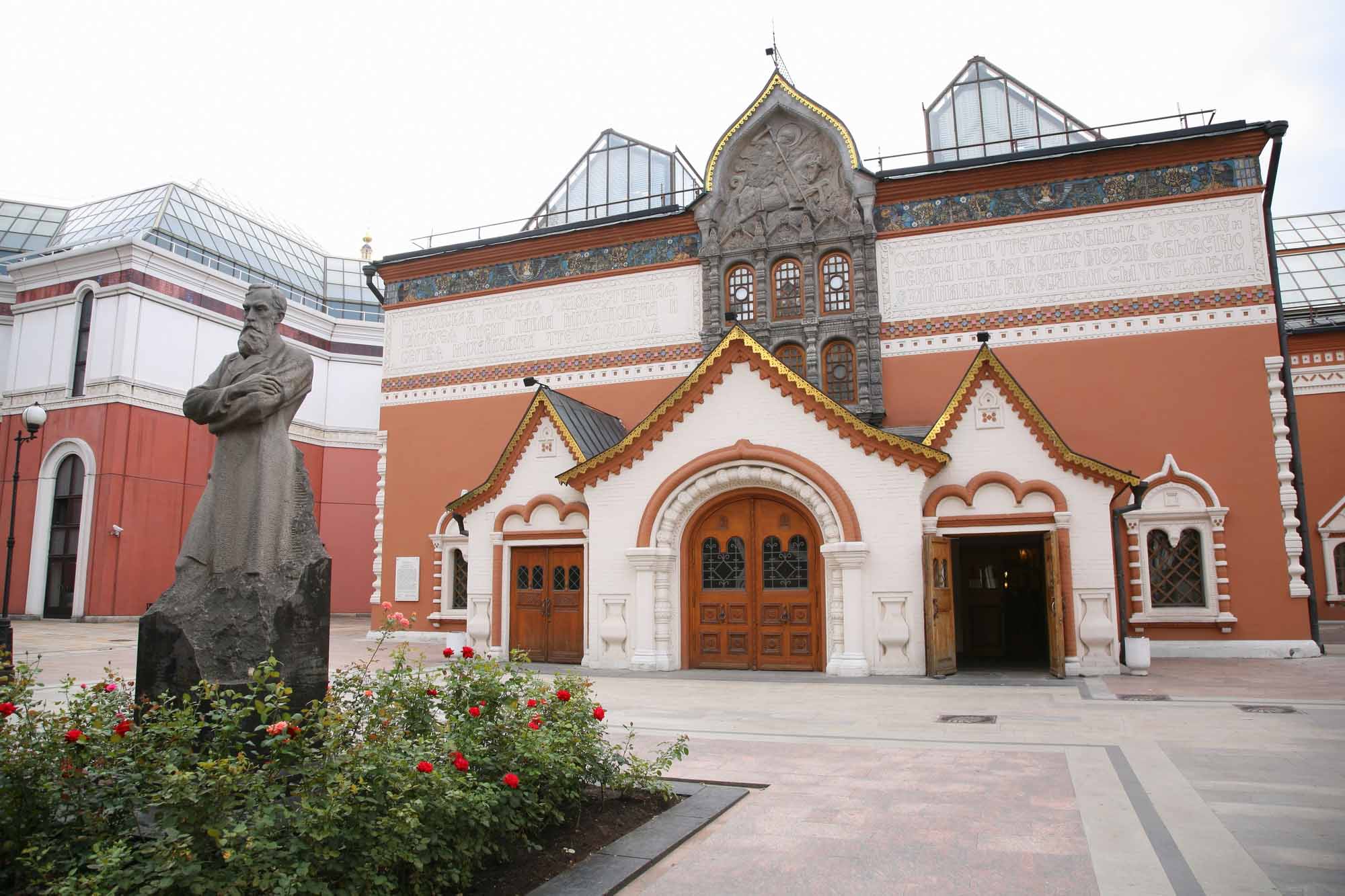
The Tretyakov Gallery is the largest collection of Russian pictorial art established in 1856 by merchant Pavel Tretyakov. At the Old (historical) Building of the gallery at the Lavrushinsky Lane you can see the XII icons, Baroque portraits, classical canvases, the first Russian veduttas (townscapes), the socially conscious Itinerants, historical paintings, romantic landscapes, paintings of realistic criticism and symbolism.
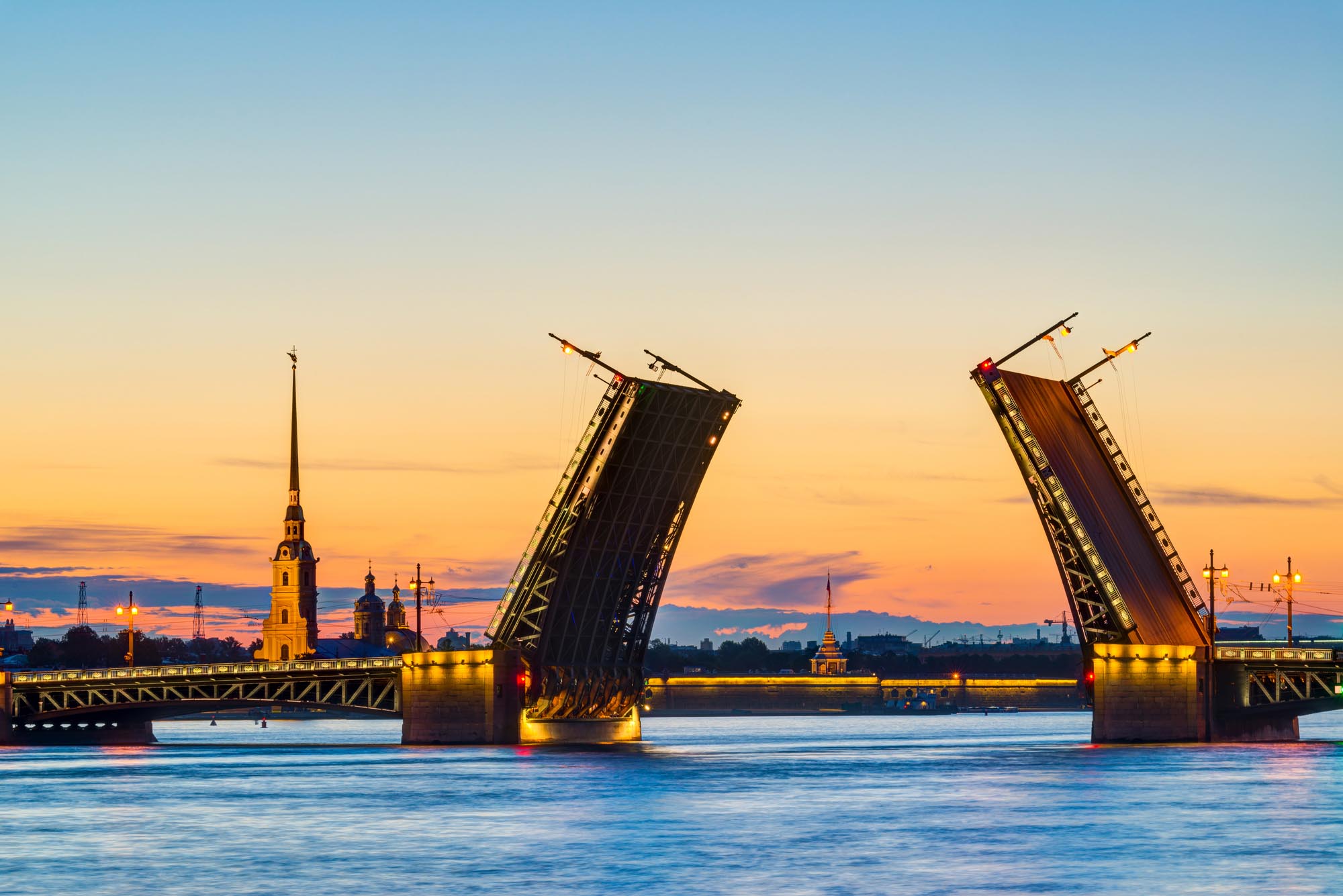
St. Petersburg was founded by tsar Peter I in the mouth of the Neva River in 1703 during the Great Northern War against Sweden. During panoramic city sightseeing tour you will see St. Petersburg’s main street the Nevsky Prospect, Neva’s embankments, Rostral Columns, buildings of Hermitage museum, the Fortress of St. Peter and St. Paul, Senate Square, St. Isaac’s Cathedral, Nicolay I statue, Peter I statue (Alexander Pushkin’s “Bronze Horseman”), Summer Garden, the Field of Mars, Resurrection Cathedral on the Spilt Blood built on the place where emperor Alexander II was murdered by terrorists on 01.03.1881, Square of Arts, Palace Square with Alexander Column, the Yusupov Palace where Grigory Rasputin was killed.
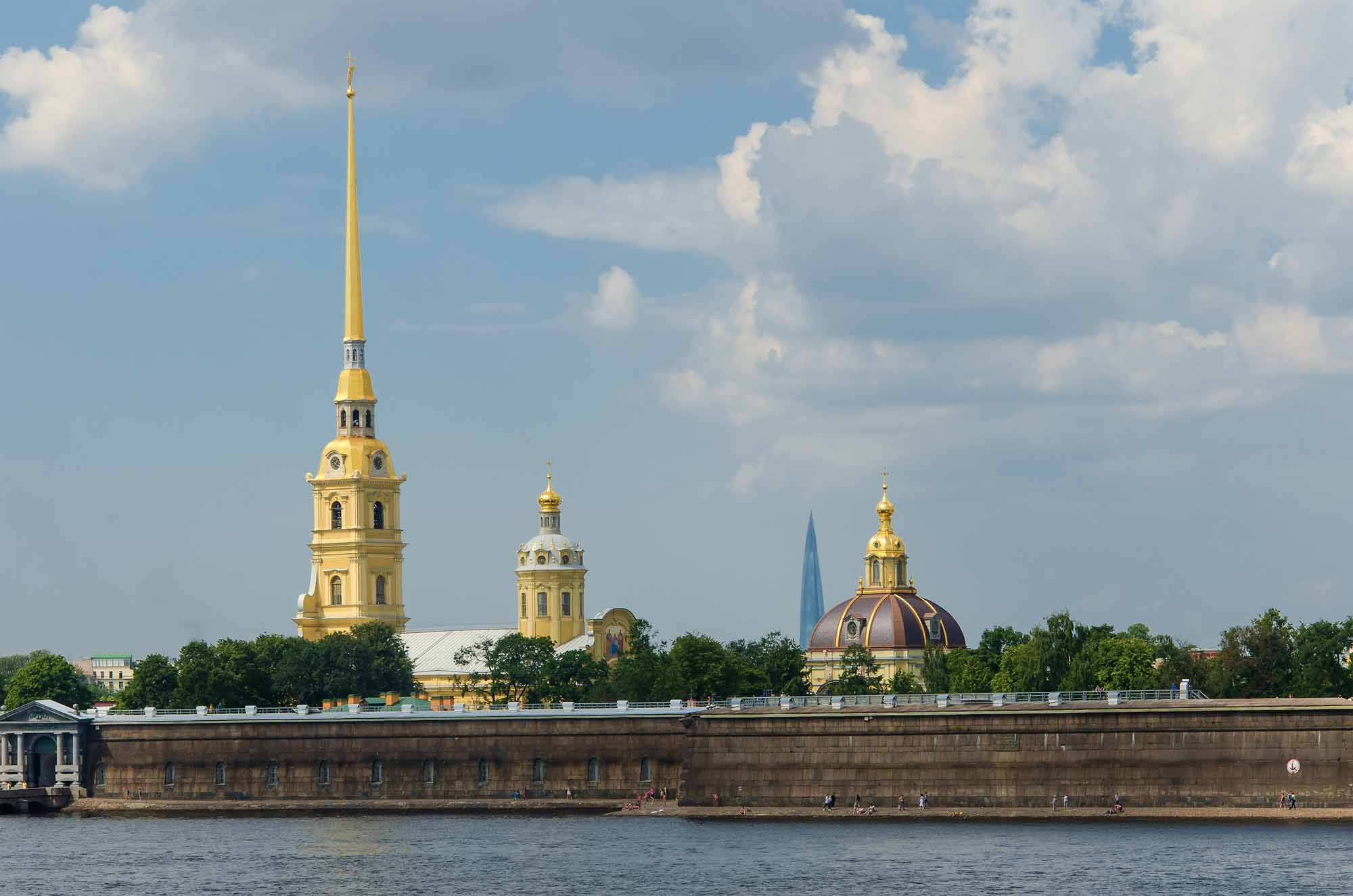
The Peter and Paul Fortress is the first construction of St. Petersburg built in 1703 in the small island on the northern bank of the Neva River mouth a few km from the sea. Peter the Great personally laid a corner-stone of his new capital here. The Peter and Paul Cathedral located at the fortress is the oldest church of St. Petersburg founded in 1703 too. This cathedral became the burial-vault of the Romanov Royal House: it contains the remains of almost all Russian emperors, empresses and members of their families at graves installed with marble sarcophagi. During a walking tour along the bastions and walls of citadel you will see the Russian Bastilles – the Secret House of the Trubetskoy Bastion where the Decembrists, many prominent revolutionaries and terrorists, poets and writers, ministers of Tasrist regime and then Provisional government, participants of anti-Bolshevik revolts were incarcerated. You will look at cannon of the Naryshkin Bastion with a long tradition of firing at 12 noon and explore the Neva Gateway leading to the pier with major floods dates and water level marked under the arch. You will have a chance to take photo from the granite Commander’s Pier, one of the most impressive places of the city.
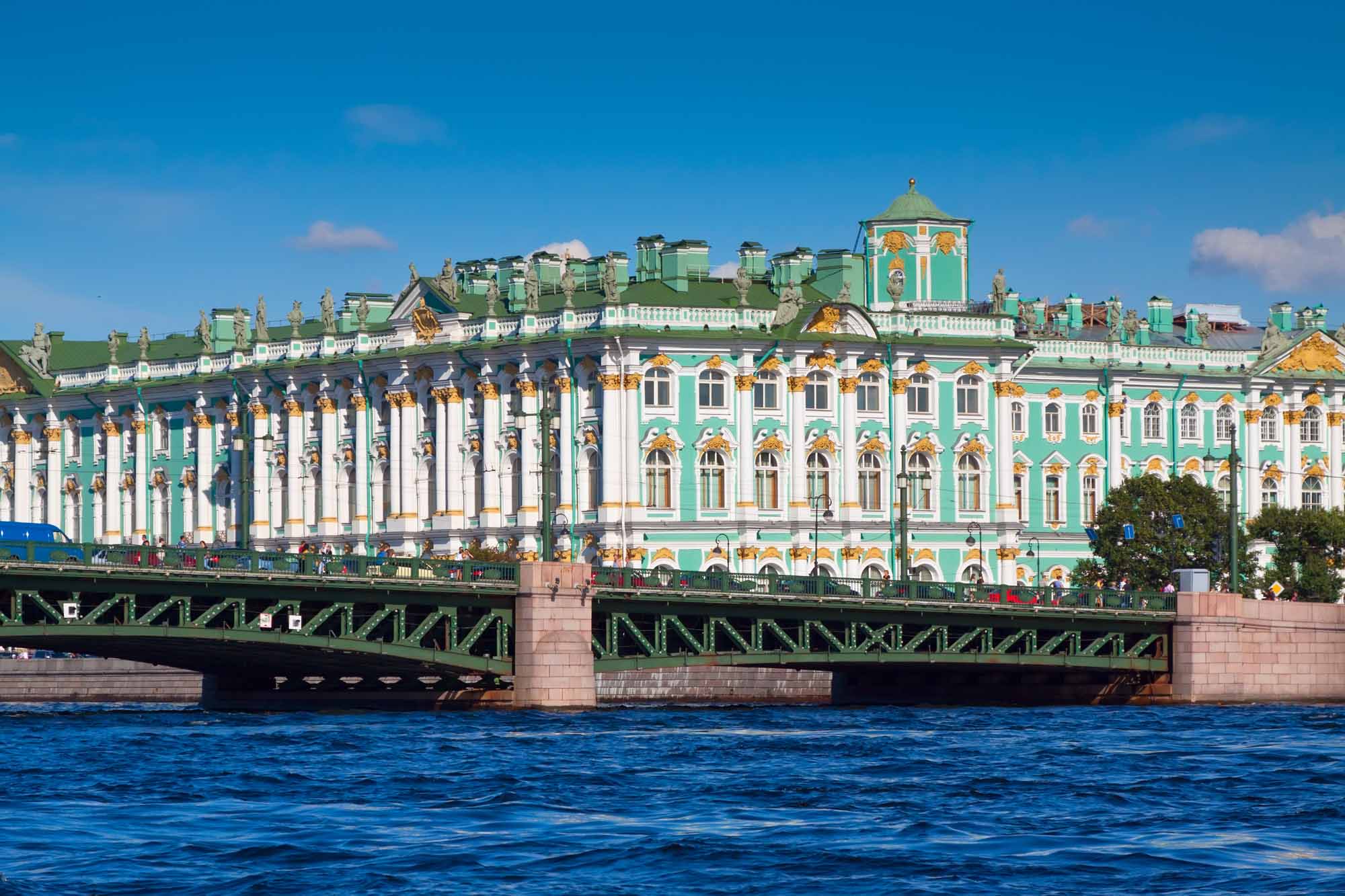
The Hermitage is one of the largest fine arts museums in the world. Somebody calculated that if a visitor stops only for one minute in front of each exhibit it will take him over 9 years to see all items exhibited. Visiting the Hermitage you enjoy a unique opportunity to appreciate a very special charm and grandeur of the royal living apartments and the treasures of the world arts through it. Great samples of primitive, oriental, Russian and West European arts since the XVI to the XX cc. are exhibited here. The final floor of the Hermitage contains outstanding collection of impressions and post-impressionists.
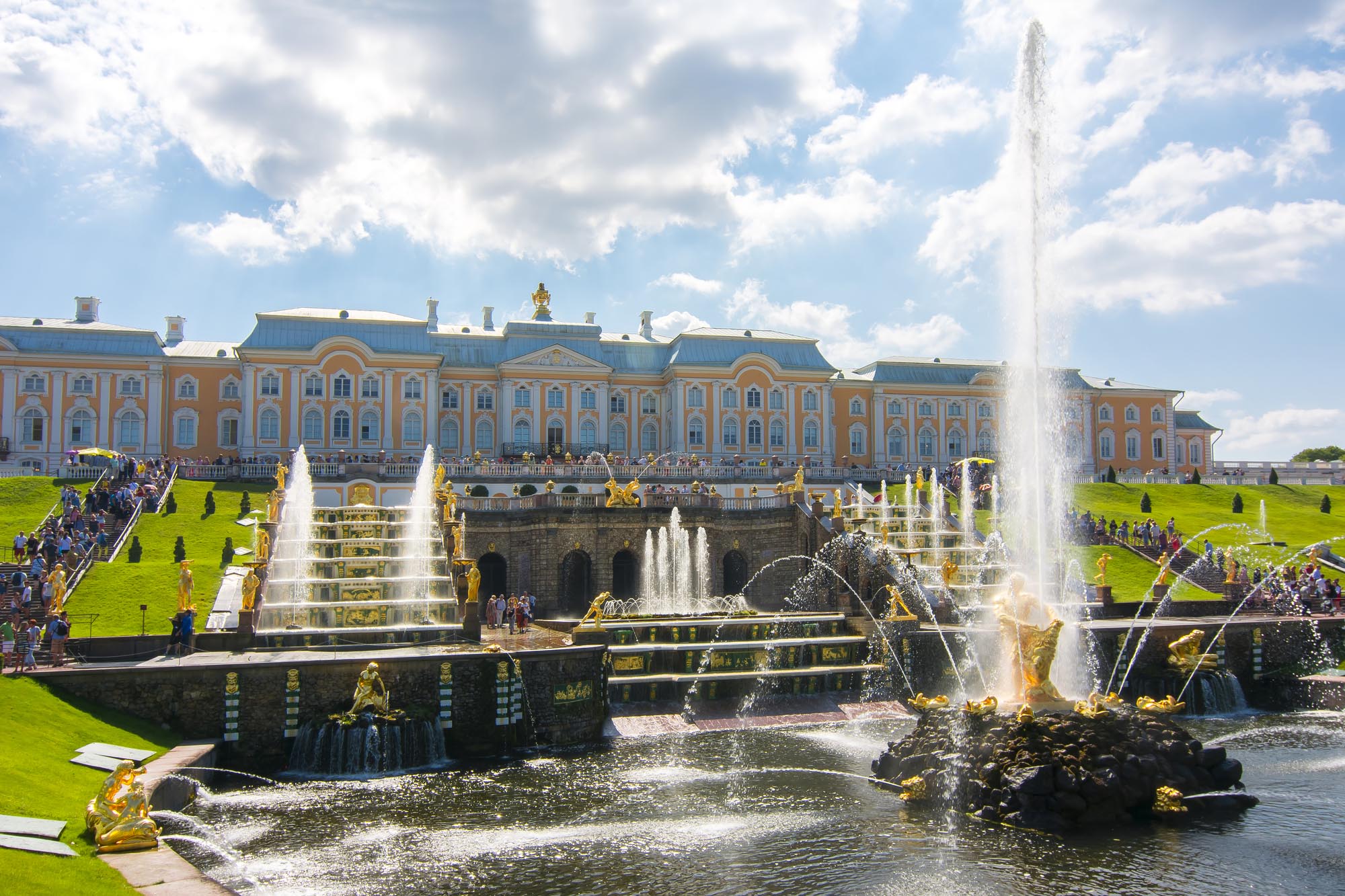
Peterhof, a former summer residence of Russian emperors in XVIII-XIX cc., was designed to the request of Peter the Great to rival the Sun King and his Versailles. 300-acres park on the shore of Gulf of Finland , spectacular fountains, the Grand Palace crowing the hill above fountains and about 20 smaller places and pavilions represent “Russian Versailles” now. You will visit the picturesque Lower Gardens with 3 unique cascades, dozens of powerful water jets and miniature palaces (Monplaisir, Marly, Hermitage) and a symbol of Peterhof – Samson Killing a Lion fountain, an allegory of the crucial victory of Russians over the Swedish army at Poltava in 1709.
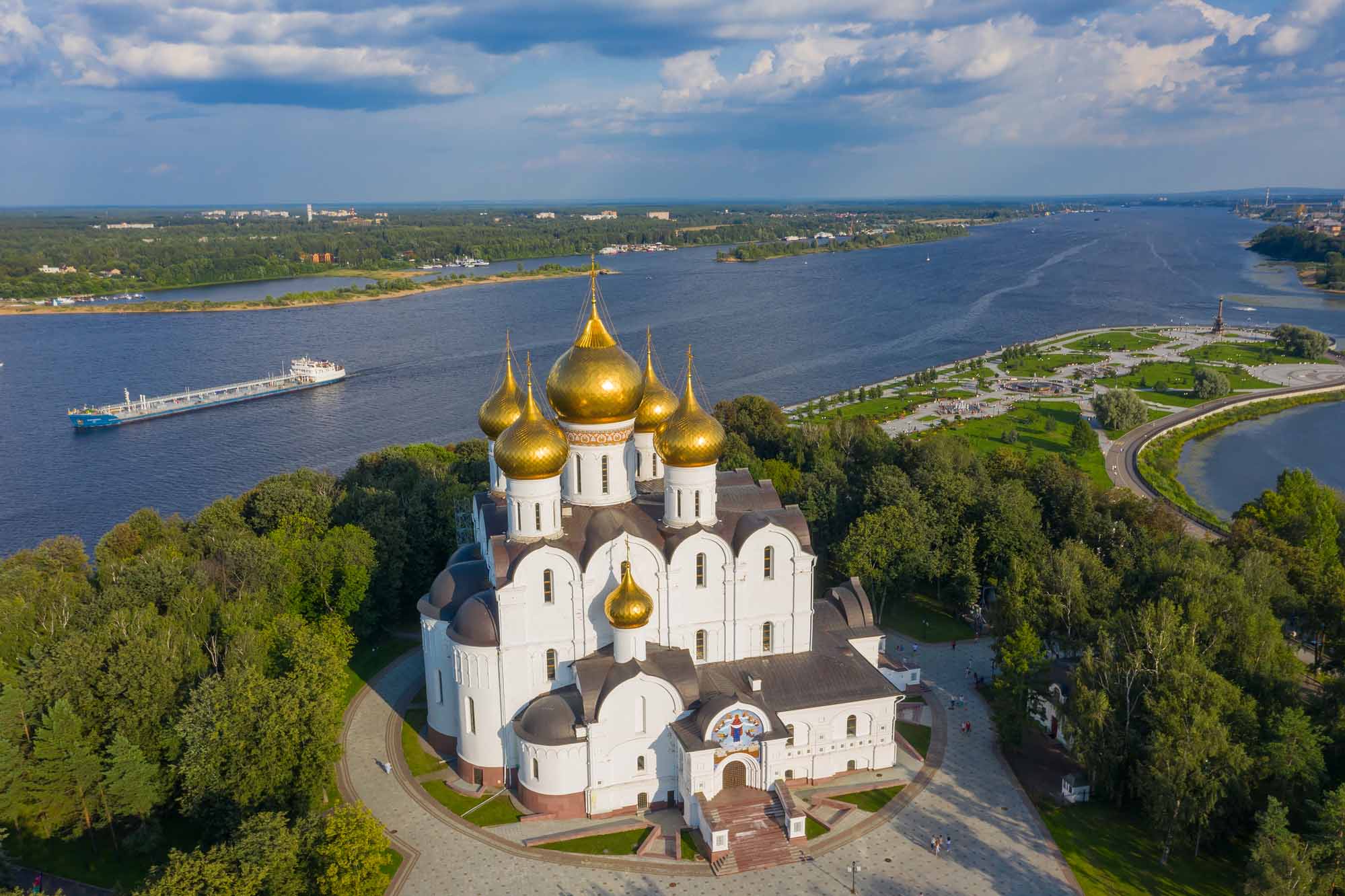
Yaroslavl was founded in 1010 by son of the Kiev prince Vladimir (in 1015 he became the prince Yaroslav the Wise) as the fortress at the place where the Kotorosl River enters the Volga. In 1612 during the Time of Troubles Yaroslavl was an the gathering place for the headed by Kozma Minin and Dmitry Pozharsky Second Home Guard being up in arms against Polish troops settling in Moscow. In 1750s young son of local merchant Fyodor Volkov arranged in Yaroslavl first Russian private public professional theater. Yaroslavl is town of trades and crafts, of numerous churches striking your imagination with its original beauty. Enjoy the Yaroslavl churches of the XVII c. with their great dimensions, multiple domes, picturesque asymmetry created by side-chapels, vestibules and porches. The most eminent of them is the Church of St. Elijah the Prophet that is extremely interesting from the point of view of architecture. The church has five cupolas on a tall semi-basement, a two-tiered gallery and side alters. The Transfiguration of Our Saviour Monastery located in the oldest part of Yaroslavl (unpreserved Kremlin at the arrow of the Kotorosl and Volga Rivers) is one of the most interesting architectural monuments of Yaroslavl. The major cathedral of the monastery was built in XIII c.. The Transfiguration of Our Saviour Monastery presents the majestic ensemble of white-stone buildings richly decorated with, frescoes. Local Museum of Fine Arts arranged at the former Governor’s House at the Volga River Embankment is the largest provincial art gallery in Russia with rich collection of icons and Russian avant-guard.
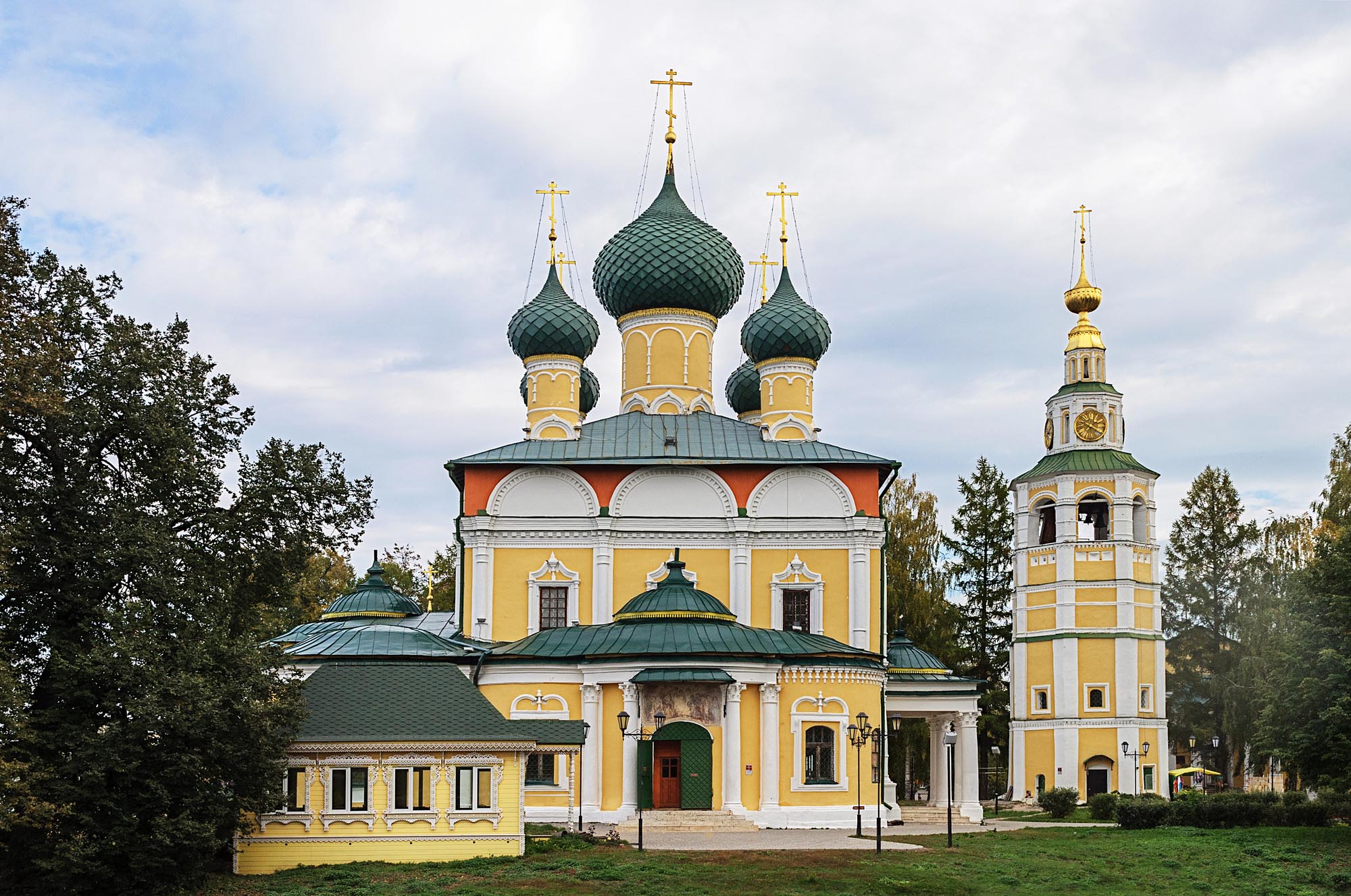
Uglich is the ancient Russian town known as the place where the first dynasty of the Russian Tsars (Rurik dynasty) was broken off (1591). After death of tsar Ivan the Terrible (1584) his last son Dmitry was moved to Uglich with his mother and 7 years later was murdered. Probably this crime was committed on order of Boris Godunov, brother-in-law of tsar Fyodor (Theodore) I Ivanovich, who aspired to became the tsar after his death. This event is considered the beginning of the very long Times of Troubles period which was ended in 1613 only with reigning of the Romanov dynasty. In Uglich you can visit the Kremlin and see the Church of St. Dimitry on the Blood built on the place of tragic death of the prince.
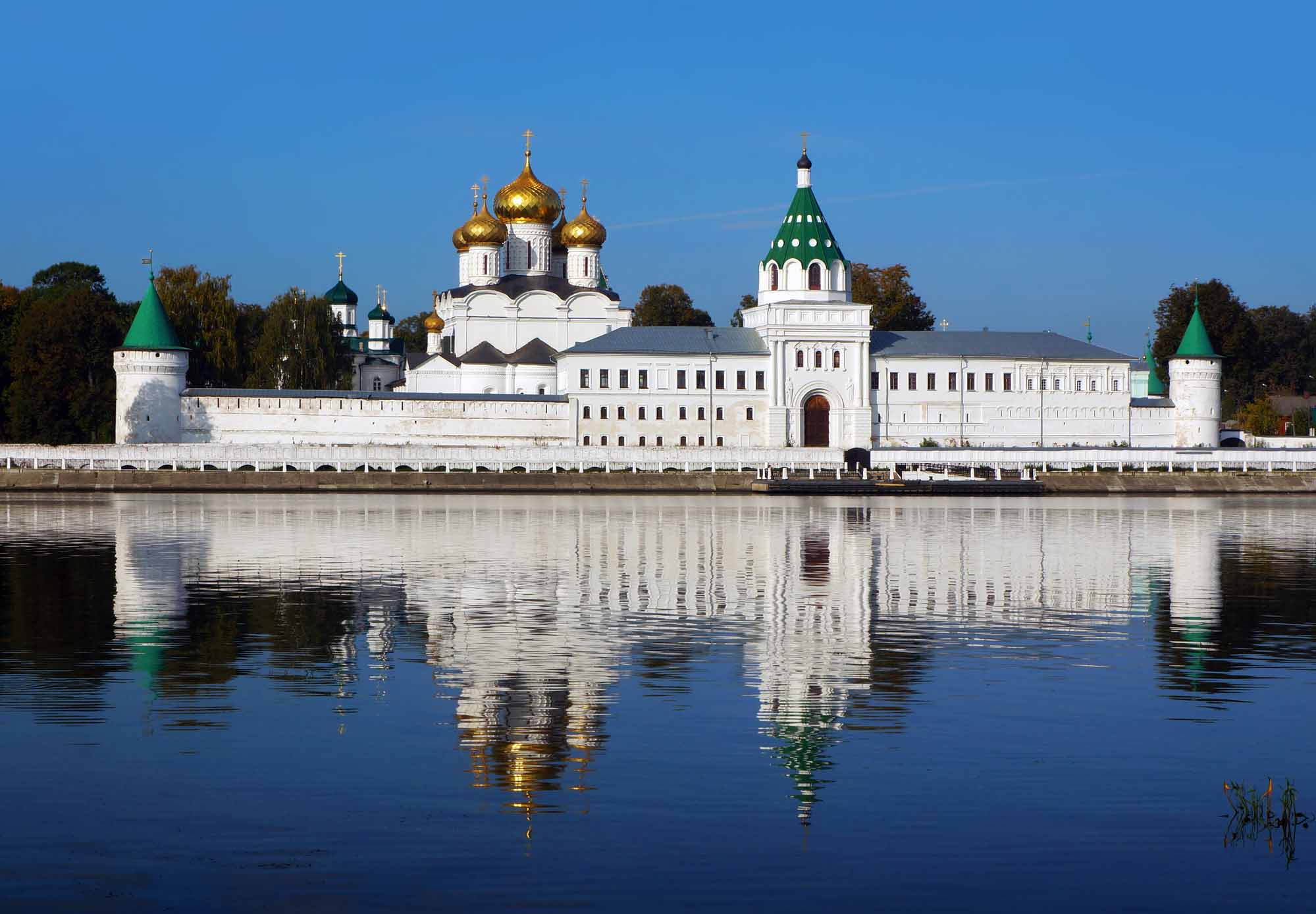
Founded in 1152 by Prince Yury Dolgoruki Kostroma is one of the oldest Russian cities. In XVIII c. Kostroma became provincial center. In the center part of Kostroma you can see a lot of buildings typical for Russian provincial architecture: Hauptwache (Military Prison), Fire House with watch tower. Thanks to its very advantageous location on the Volga River bank was important merchant transit point. Local trading arcade is one of the largest market center of the XVIII-early XIX cc. preserved till nowadays. An unforgettable flavor to the unique setting of old architecture and the picturesque views of Kostroma are added by its beautiful churches. Local churches are known for their rich interior decorations and especially for their frescoes. The Church of Resurrection (XVII c.) has unique iconostasis. The Monastery of St. Hypatius presents XVI-XVII cc. architectural ensemble which is a museum now. You will see XVII c. frescoes and majestic five-tier iconostasis made by local eminent wood-carvers at the Trinity Cathedral (1652), the family burial of the Godunov Boyars.
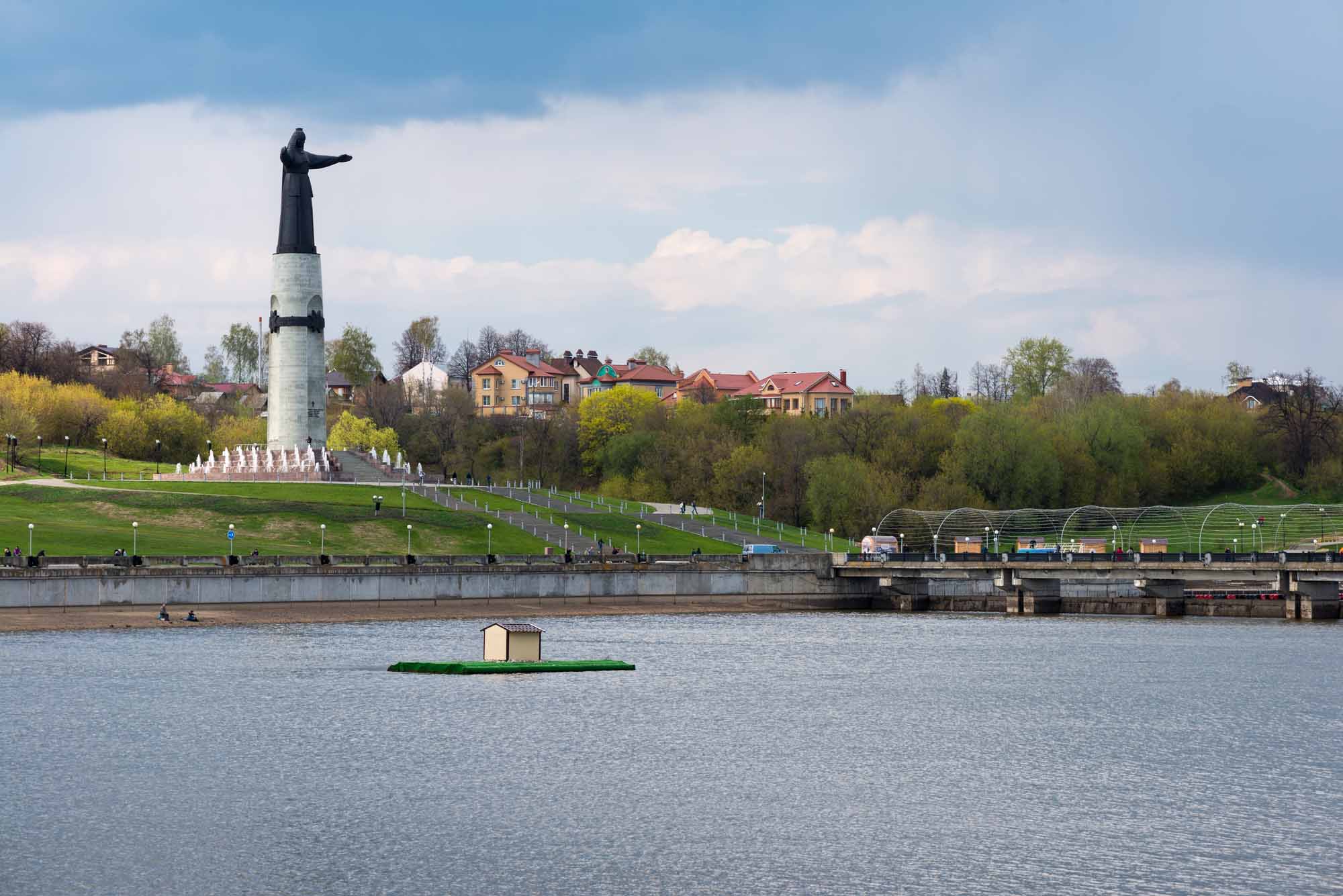
Cheboksary is capital of the autonomous Chuvash Republic. Here you will see the Volga River and the Cheboksarka River embankments, the Theater Embankment, Square of Republic, house of merchant Yefremov and other places of interest. During city center walking you will see a lot of buildings corresponding with official Russian Orthodoxy (Diocese House, Holy Trinity Monastery, Candlemas Cathedral, Archangel Michael Church) and also pre-Christian spiritual symbol of the Chuvash people — gigantic the Mother Monument erected in 2003 on the initiative of the local intelligentsia.
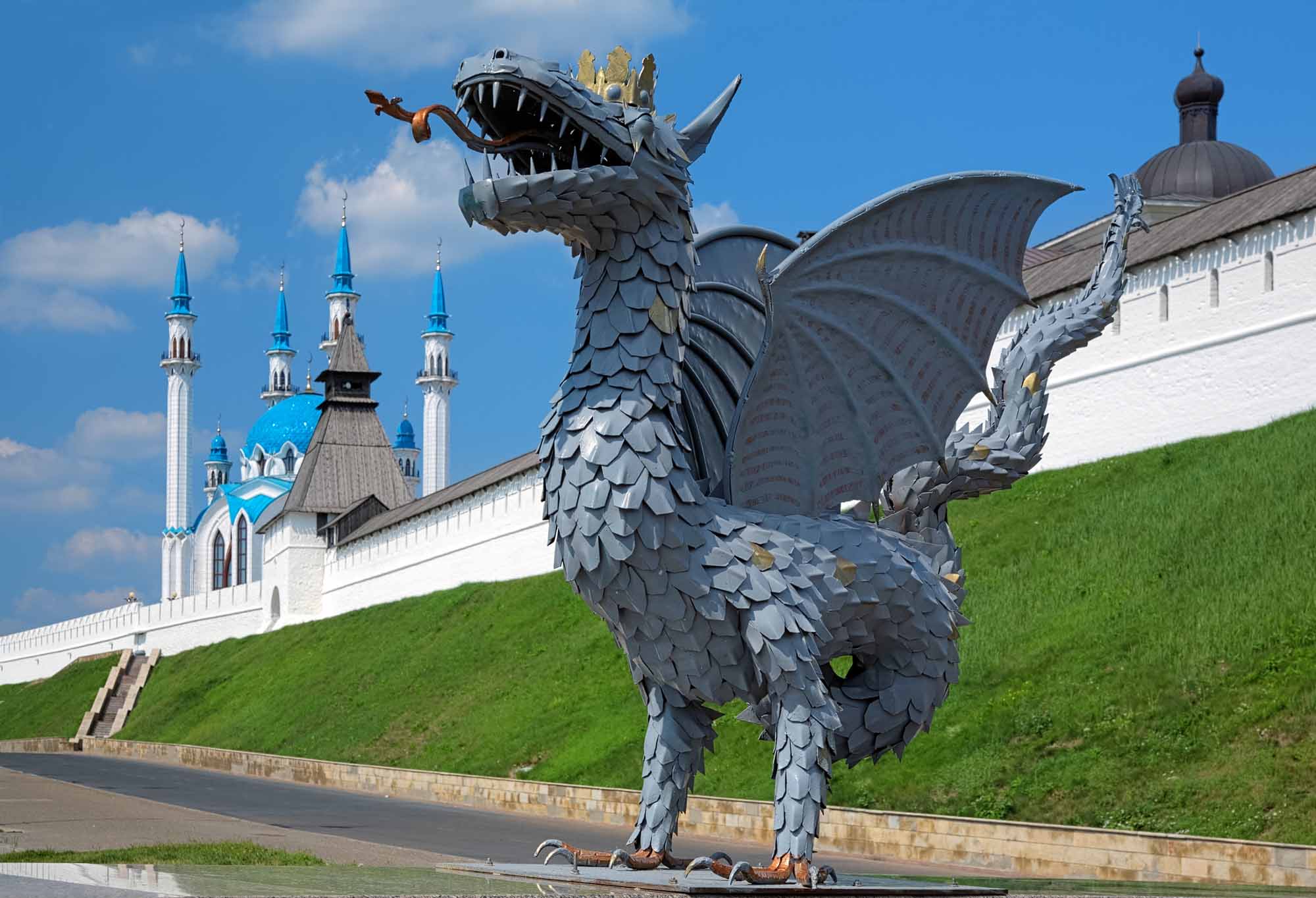
Kazan is capital of the autonomous Tatarstan Republic. In 1552 independent Kazan Khanate formed at the Middle Volga region after disintegration of the Golden Horde was conquered by Russian tsar Ivan IV (the Terrible) and Kazan became one of the largest and most important centers of Russian state. You will see the Kazan Kremlin, a UNESCO World Heritage site, with the magnificent Qol Sharif Mosque, St. Peter and St. Paul’s Cathedral built in 1726 to commemorate visit of Peter the Great to Kazan, pedestrian Bauman Street with St. Epiphany Church where great Russian singer Fedor Shalyapin was christened and various sculptural compositions and fountains made after Tatar legends, Freedom Square, Kazan University, Old Tatar Settlement where the atmosphere of old Kazan has survived (narrow streets, wooden houses, carved fances) and where you will see Marjani Mosque built in 1771 – one of the first stone mosques in city.
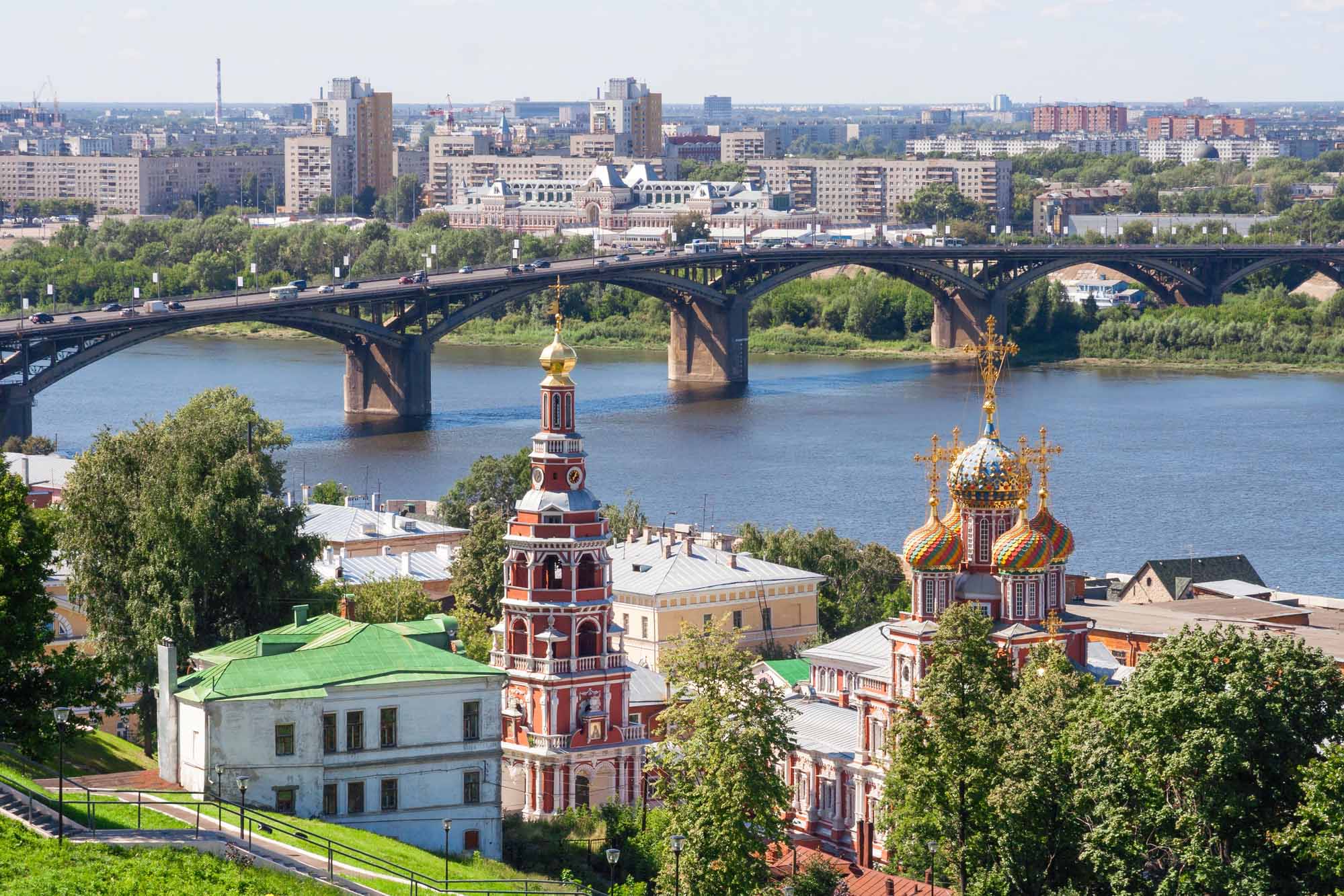
Nizhny Novgorod lies at the confluence of the Volga and the Oka Rivers. City was founded in 1221. In period of Times of Troubles Nizhny Novgorod became a place where headed by Kozma Minin and Dmitry Pozharsky the Second Home Guard being up in arms against Polish troops settling in Moscow was formed (1612). In the XIX-early XX cc. it was a major commercial and industrial center of Russia, one of the most significant in Europe. All the architecture of the city center corresponds to the Russian merchant’s way of live. Great Russian writer Maxim Gorky spent in Nizhny Novgorod his childhood. You still can see in the city a lot of buildings where prototypes of many his works lived. You will walk by the pedestrian Bolshaya Pokrovskaya Street and the picturesque Upper Volga Embankment. The Nizhny Novgorod Kremlin is the central part of this ancient town occupying a relatively small territory on the hill where the Oka River enters into the Volga. The grandiose (560 steps!) Chkalov Stairs built in 1940s by German prisoners of war leads from the monument to this legendary Soviet pilot erected not far from the Kremlin to the Volga River pier.
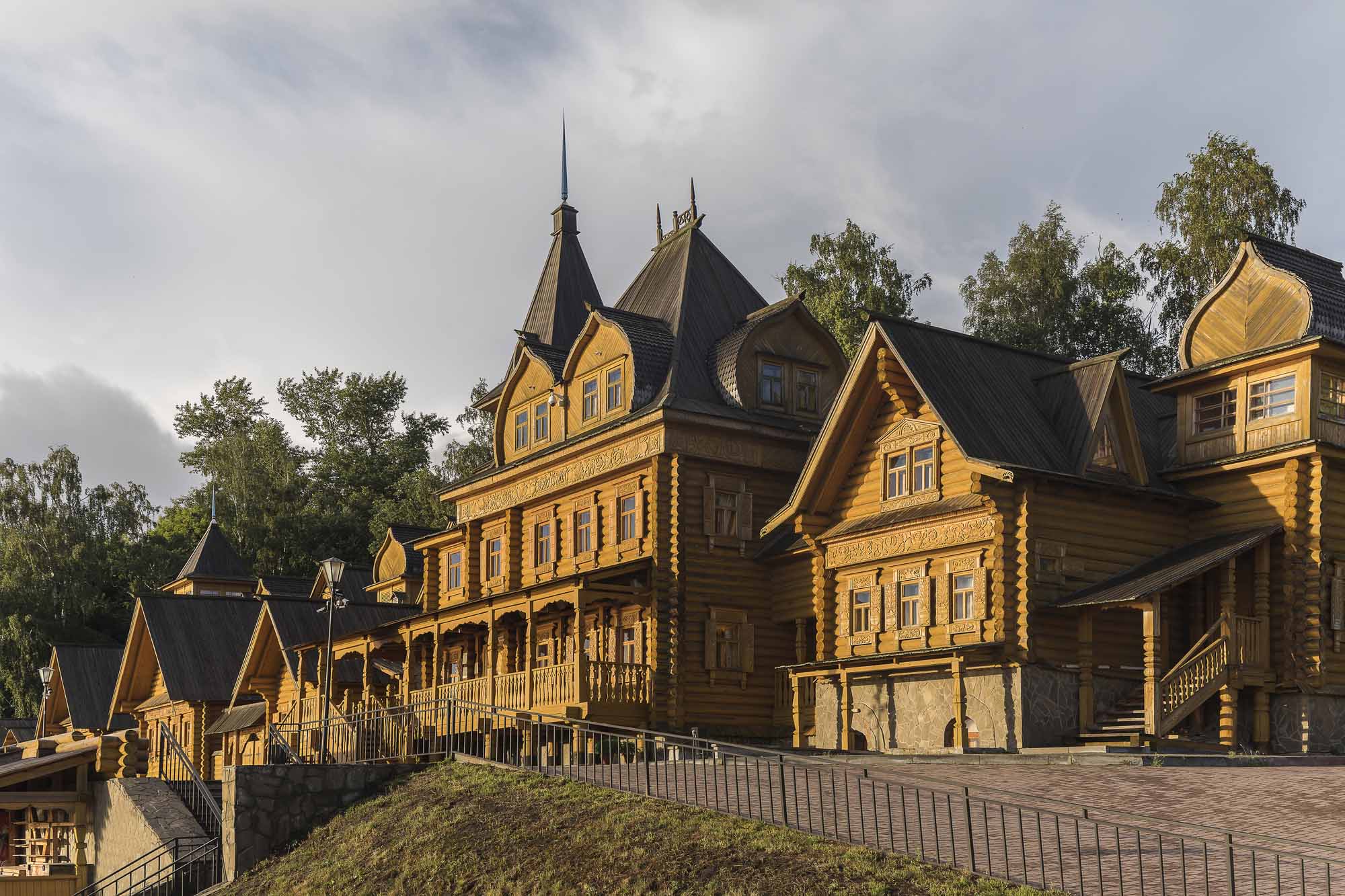
The Nizhny Novgorod Region has always been renowned for its folk crafts – the Khokhloma and the Gorodets multicolored gilt-shining painting on wood. Visiting Gorodets town (70 km away) you will have an opportunity to purchase original authentic Russian souvenir directly at the traditional place of its manufacturing.
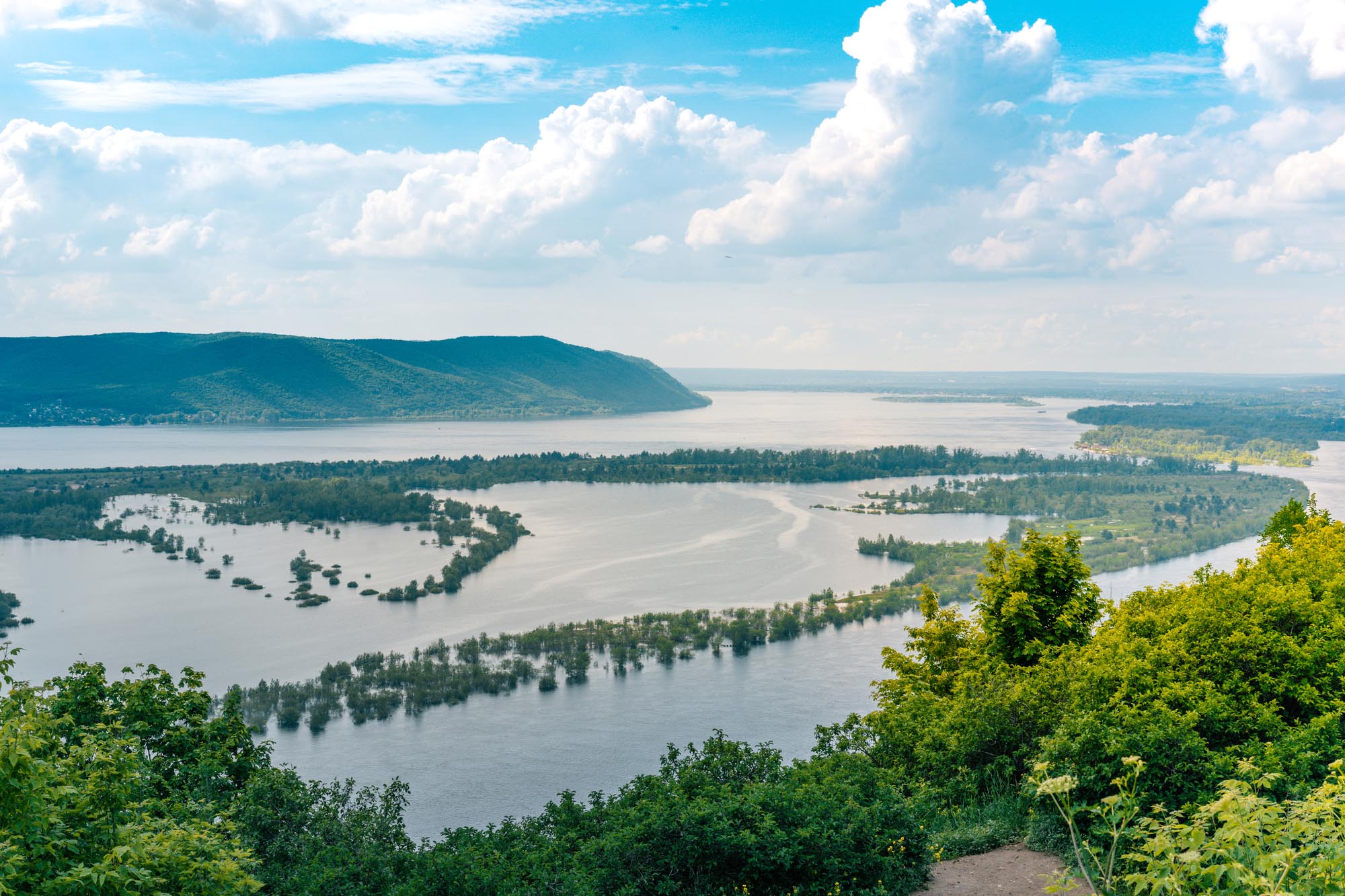
The Volga River is the greatest river in Europe, its length is about 3530 km. Its ancient name fixed by Herodotus was the Ra. In the Middle Ages Arabs and Europeans used name of the Itil given for the river by Turk nomad peoples of the Great Steppes. The Volga starts at the Valdai Uphill and runs to the Caspian Sea making the delta with the area of 19,000 sq. km. The Volga is joined with the Baltic Sea by the Volga-Baltic Water Way, with the White Sea by the North-Dvina Water System and by the White Sea–Baltic Canal (one of the main symbols of the Stalin’s Gulag), with the Sea of Azov and the Black Sea by the Volga-Don Canal, with city of Moscow (the Moskva River) by the Moscow Canal. The route of the popular river cruises Moscow-St. Petersburg runs along the Moscow Canal and the Volga-Baltic Water Way. Cities situated along the Volga River banks always take active participation in trade between China, India, Iran, Russia, West Europe, nomads of the Great Steppes and Arabs. Among them are Tver, Yaroslavl, Kostroma, Nizhny Novgorod, Cheboksary, Kazan, Ulianovsk (Simbirsk), Samara, Volgograd (Tsaritsin), Astrakhan.

The largest city of the Volga River region Samara was founded in 1586 as a fortress at new South-east borders of Russia after conquest of the Kazan and the Astrakhan Khanates. Thanks to its very good location at the crossing of important trade ways Samara became one of the largest merchant centers of Russia and since 1850 city became a regional center. In summer 1918 during the Civil War in Russia Samara was a center of anti-Bolshevik resistance: the Committee of Members of the dispersed by Bolsheviks in January 1918 Constituent Assembly sat at the city. Since 1935 to 1991 Samara was called Kuybyshev after Stalin’s Politburo member and one of the main rulers of Soviet economics and Stalin’s economic counsellors Valerian Kuybyshev who died in 1935 and who headed local Bolsheviks Party organization in period of the October Revolution and the Civil War. In October 1941 when there was an actual threat of capture of Moscow by German troops the Soviet government, Supreme Soviet of the USSR, diplomatic representations of foreign states, the Bolshoi Theater, the Mosfilm studio were moved into Samara. Special bunker for Stalin was built but he preferred to stay in Moscow. Nowadays Samara is one of the largest industrial and cultural centers of Russia with the longest in Russia embankment, the largest in Europe square (the Kyubyshev Square) and underground system which covers not only Samara but also nearly located cities of Syzran and Togliatti. The most interesting architectural monuments of Samara were built in late XIX-early XX cc.. Among them are Golovkin’s House (House with Elephants), Clodt’s House, Kurlina’s House (known also as a house where Swedish Embassy was moved from Moscow in 1941), the Zhigulevsky Brewery, the Peasant’s Land Bank, the Museum of Fine Arts known with its great collection of Russian avant-guard art, the State Bank. Soviet constructivism architecture is presented with the grandiose House of Industry (1936). And even if you have reached Samara by motor ship you should see building of local railway station (2001), the highest in Europe.
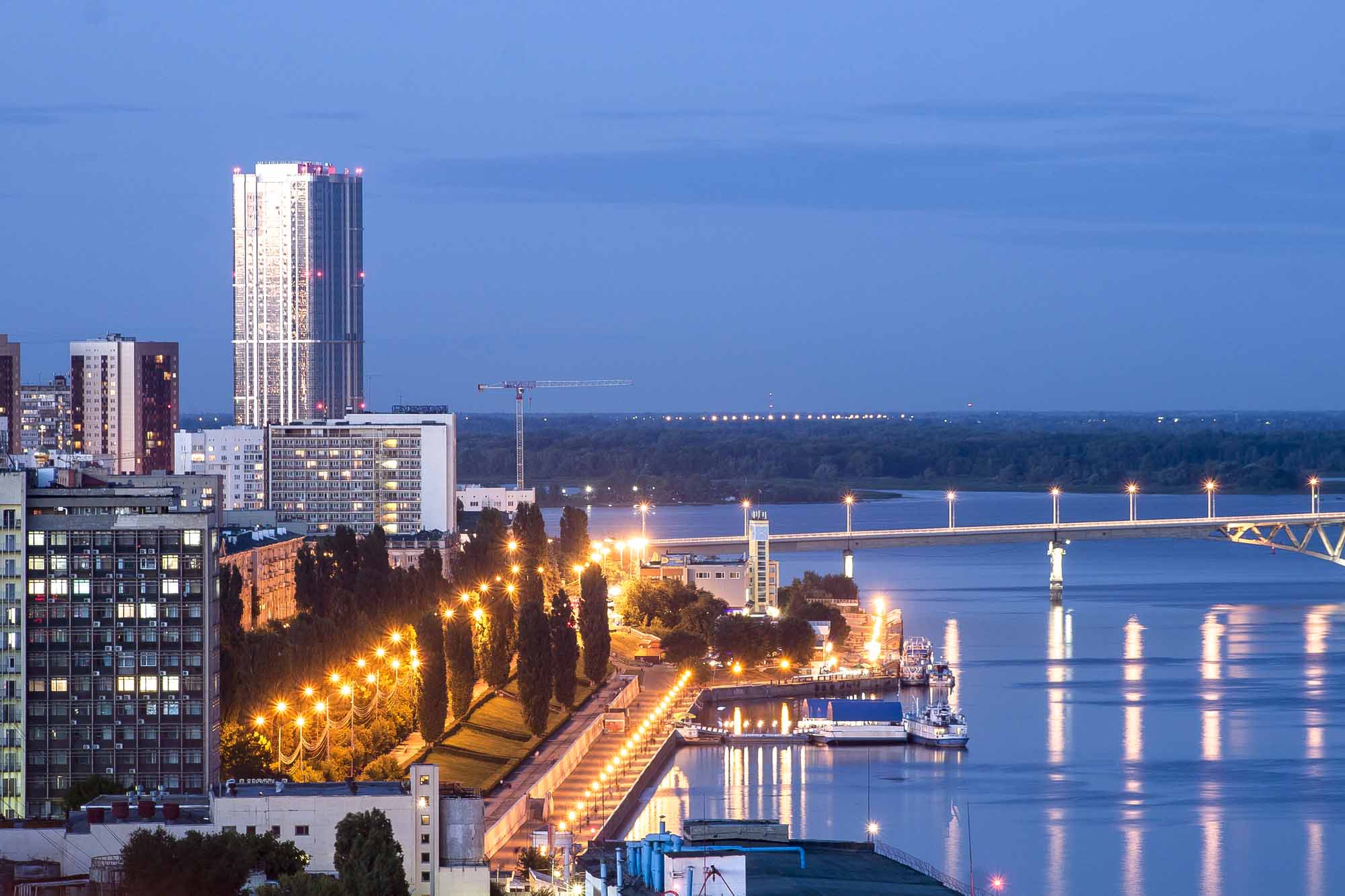
Saratov (probably from Turk “sary-tau” — yellow mountain) was founded in 1590 in accordance with programme of fortification building at new South-east borders of Russia after conquest of the Kazan and the Astrakhan Khanates (1550s). Since 1760s after the Manifesto of Catherine II (the Great) city became one of the largest centers of German migration into Russia (all German colonists were departed to Siberia, Central Asia and Kazakhstan in 1941). Saratov was on of the largest and most important in Russia centers of the fish and especially the grain trading. Medieval architecture of Saratov is presented with unique sample of the Moscow Baroque – the Trinity Cathedral (late XVII c.). The most interesting architectural monuments of Saratov were built in late XIX – early XX cc.: the Conservatoire (1912), the University (1909), the Marker (1916), Administration of the Ryazan-Urals Rail Road (1907-1914), Soothe My Sorrows Church (1904-1906), Reyneke House (1912-1914), Borel House, Satov House, Fridolin’s Chemist’s Shop (1910s). During Saratov city sightseeing tour you will also walk through the pedestrian Kirov Avenue (former the German Street), will see complex of city and regional administration buildings at the Stolypin Square with monument to Pyotr Stolypin (this great Russian statesman was Saratov governor in 1903-1906).
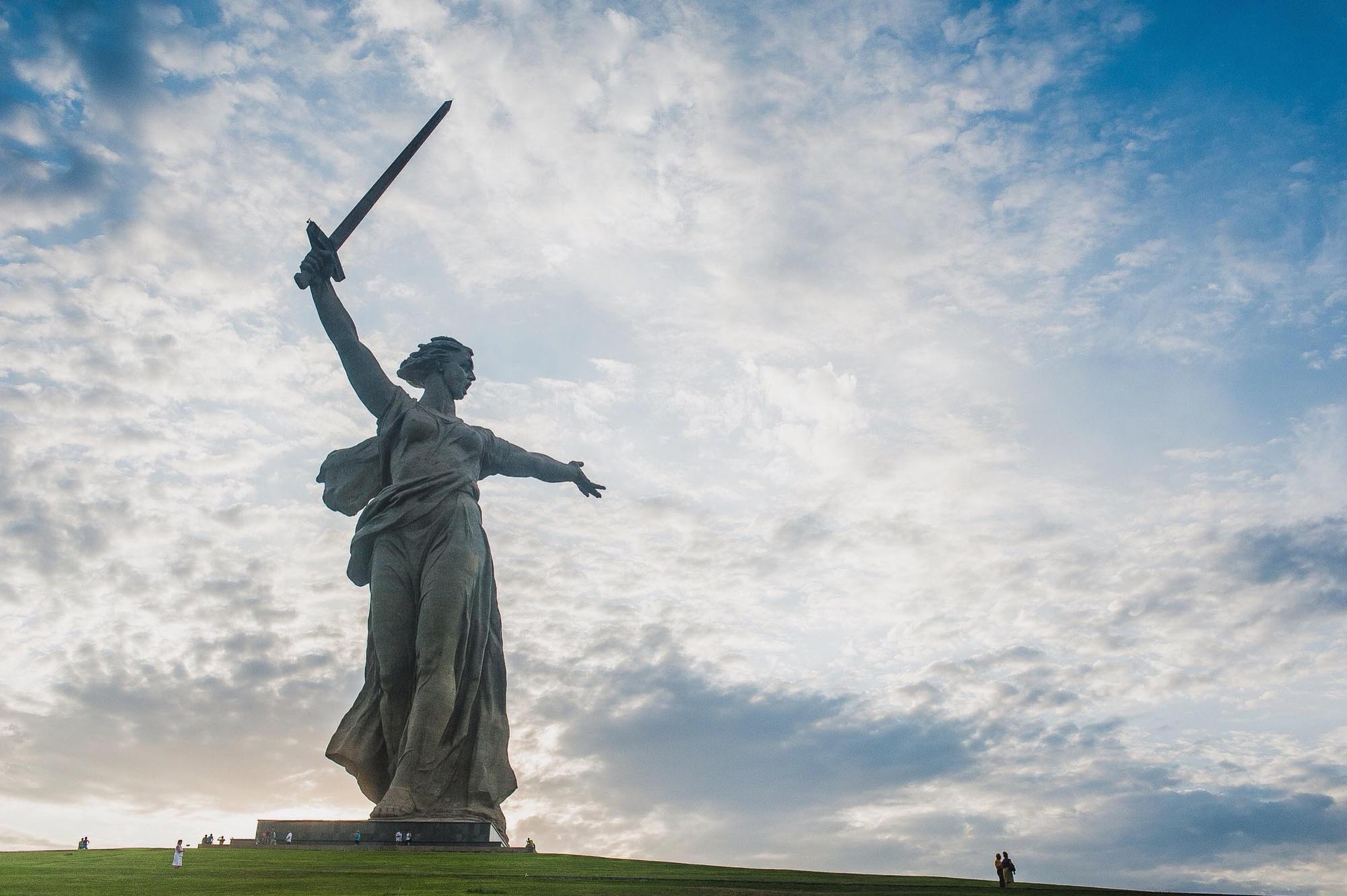
Russian city of Tsaritsin was first mentioned in historical chronicles in 1581. Literally the word of Taritsin means Tsarina’s Town but actually name of the city doesn’t concern a wife of Ivan the Terrible. This name came from the Turk Sari-su (yellow river) or Sari-chin (yellow island). In XVII-early XX cc. Tsaritsin was large and important merchant center of the Russian South. During the Civil War in Russia the city was an arena of fierce fighting between the Reds and the Whites. In 1925 when Stalin began to gain the upper hand over Trotsky during their struggle for authority in the Bolsheviks Party Tsaritsin was renamed into Stalingrad. The city entered to the history of the world as the place of greatest battle of WW II – Battle of Stalingrad (July 1942 – February 1943). Practically all dwelling houses and all industrial buildings were destroyed but by 1950 the city named after Josef Stalin was completely reconstructed. In 1962 during de-Stalinization campaign in the USSR the city was renamed into Volgograd. During city sightseeing tour you will learn about history of the city, visit the Central Embankment, the Perished Heroes Square. At the Mamayev Kurgan (the Tumulus of Mamai) which was a place of the most fierce fighting during the Battle of Stalingrad you will visit outstanding sample of Soviet monumental propaganda — grandiose the Motherland Call! monument (1959-1967) designed by sculptor Evgeny Vuchetich.
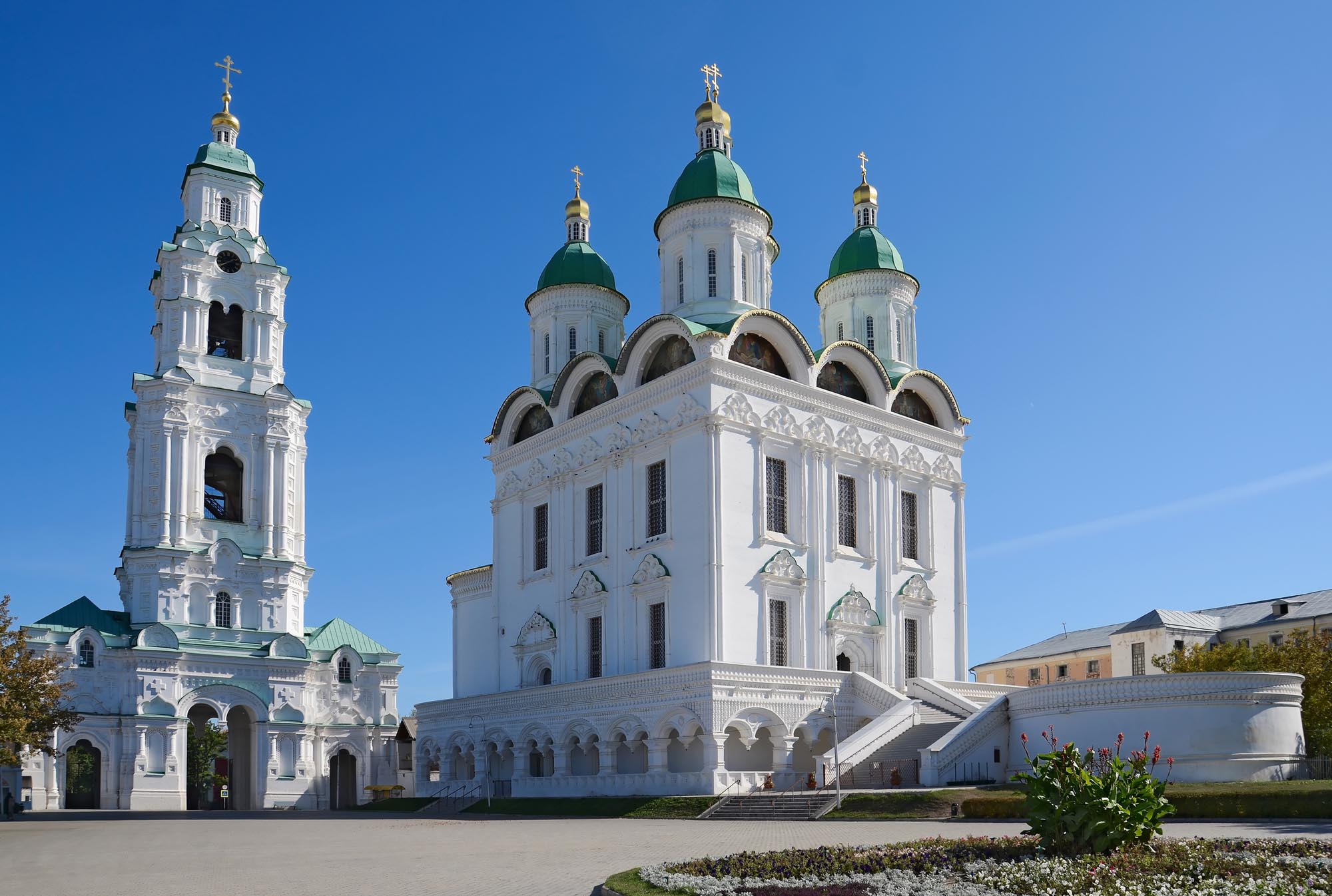
City of Astrakhan situated on 11 islands not far from the Volga River delta is known since second part of the XIII c. as one of residences of the Golden Horde khans. In 1556 the independent Astrakhan Khanate formed at the Lower Volga region after disintegration of the Golden Horde was annexed by Russia and the city became one of the most important merchant’s centers of Russian South. Now Astrakhan is modern city with a lot of historical and architectural monuments kept. Among them is the Astrakhan Kremlin (1580-1620) built accordingly to decree of Ivan the Terrible. The belfry of the Most Blessed Mother Gates of the Kremlin and nearly located the Assumption Cathedral (1698-1710) are architectural symbols of Astrakhan. The Trinity Cathedral (XVI-XVIII cc.) is another very interesting building at the Kremlin grounds. During city sightseeing tour you will see numerous places of interest: St. Vladimir Cathedral (1895-1902), Catholic Church of the Assumption of Mary (1778), local branch of the Azov-Don Bank, the Modern style houses of local merchants (among them are the Grigoriev’s House where the local Puppet Theater is located now and the Gubin’s House), wooden dwelling houses, mosques (for example, the Black and the White Mosques built in early XIX c.) and Orthodox churches.
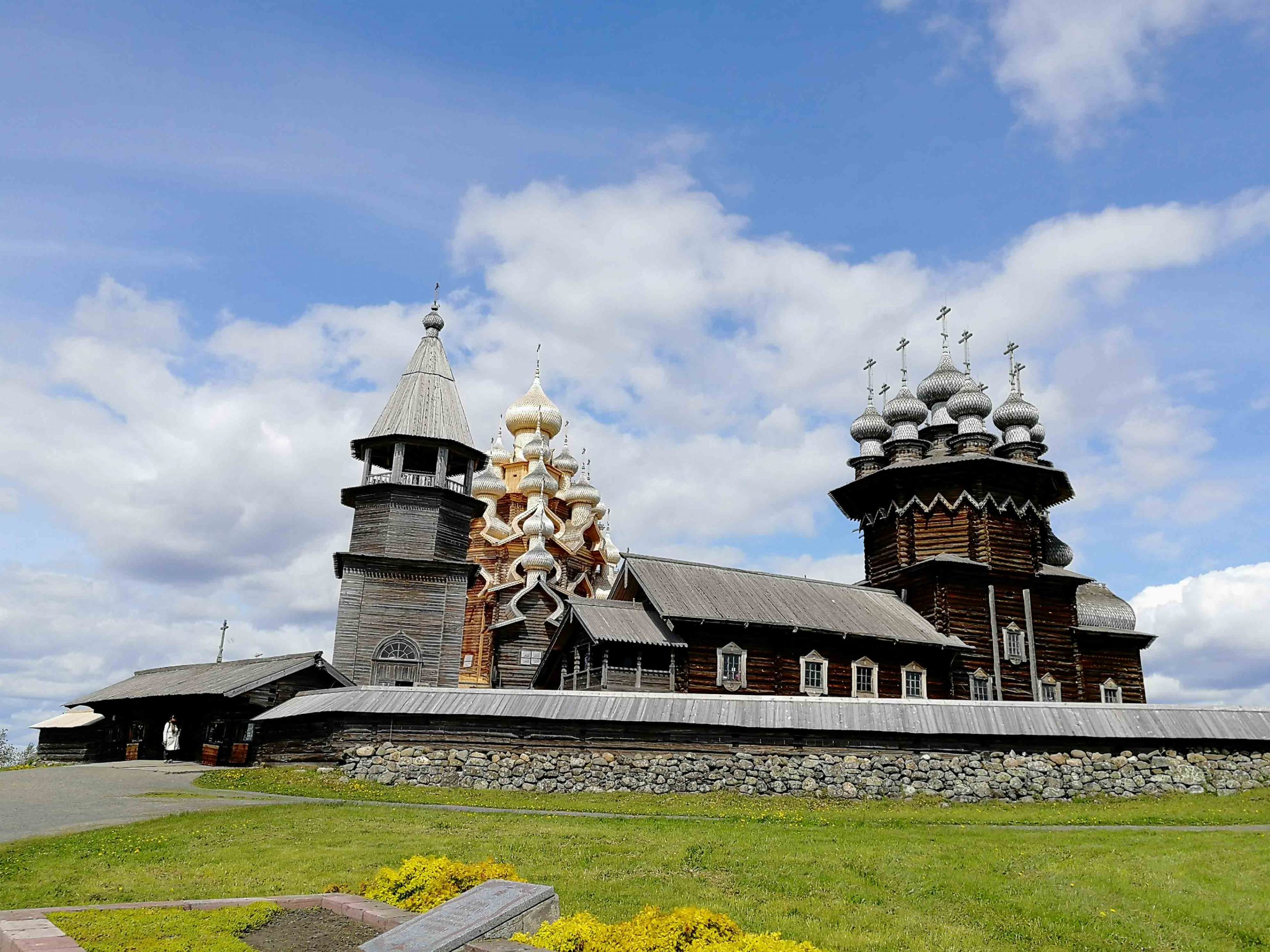
Kizhi is one of the first open-air museums and one of the most popular tourist attractions in Russia. The famous historical, architectural and ethnographic museum reserve Kizhi included to the UNESCO World Heritage List is situated on the island at the Onega Lake. Magnificent samples of Russian Northern wooden architecture are collected there representing the culture and mode of life of the Karels, Vepses and Russians. In Kizhi you can see buildings considered to be the masterpieces of wooden architecture: 22-domed Transfiguration Church (1714) according to legend originally built without nails and pegs, winter the Intercession Church (1764), bell-tower (1863) and reconstructed in the 1950s fence of XVII c., 300-meter-long log structure surrounding the two churches and the belfry built in the 17th century as a protective measure against Swedish and Polish incursions. Peasants’ houses brought in origin from different places of Russian North to the territory of museum reserve represent culture of the peoples of Karelia.

The Lake Onega is one the second in size water reservoir in Europe (after the Lake Ladoga). The water surface area is 10,000 sq. km, the length is 248 km, the width is 80 km. The average depth is 30 m, maximum depth is 127 m. There are 1650 islands (mostly scarrys) with the famous Kizhi among them.
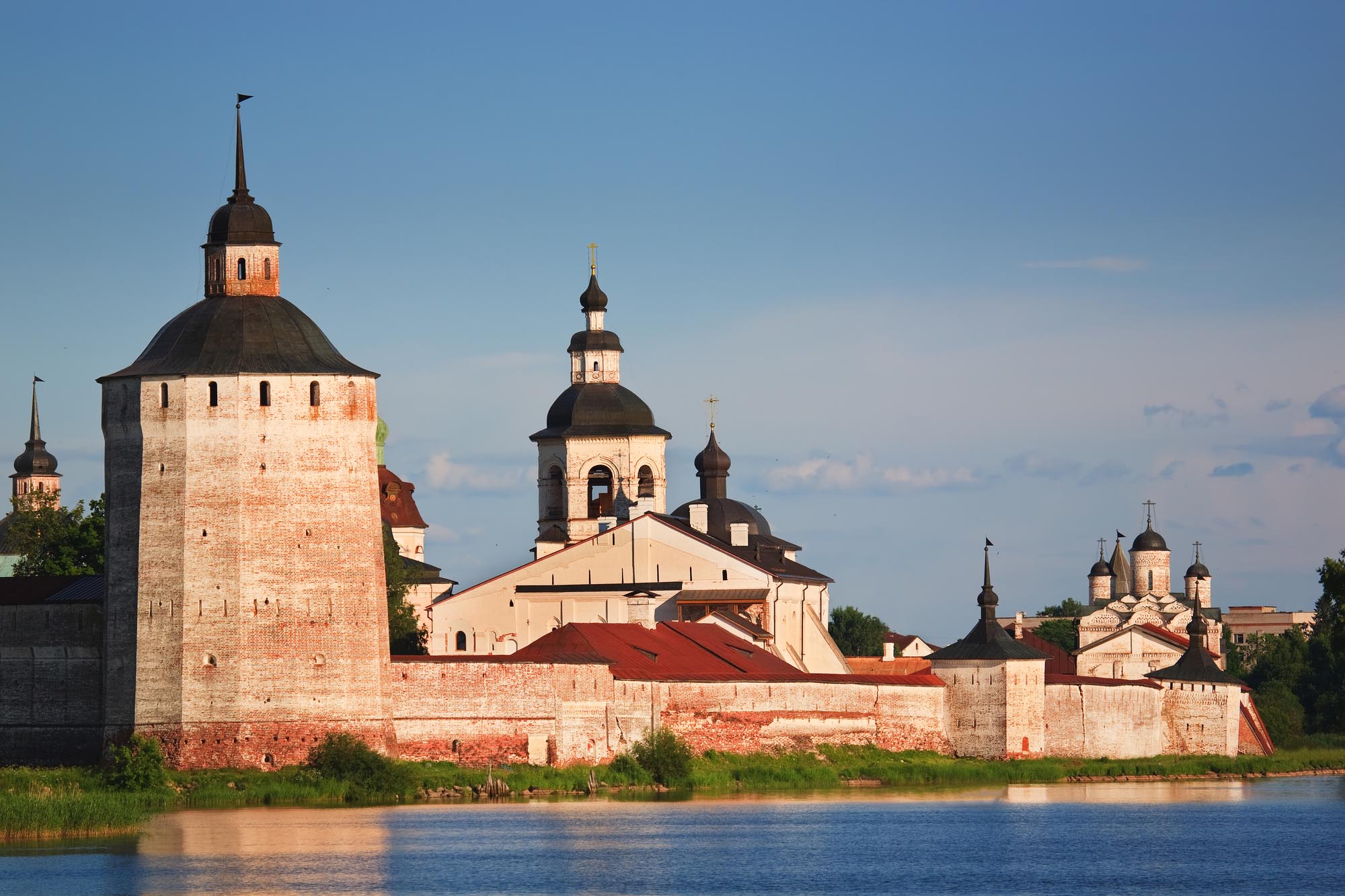
Staying in Goritsy you will visit the White Lake St. Cyril’s Monastery founded in the late XIV c. by monk Cyril was one of the largest and richest monasteries of Russia, one of the most important cultural and spiritual centers. Since the XV c. the monastery was a place of political exile for representatives of Russian noble families including Princes Rostovsky, Mstislavsky, Belsky. Now you can see great architectural monuments of the XV-XIX cc. there.
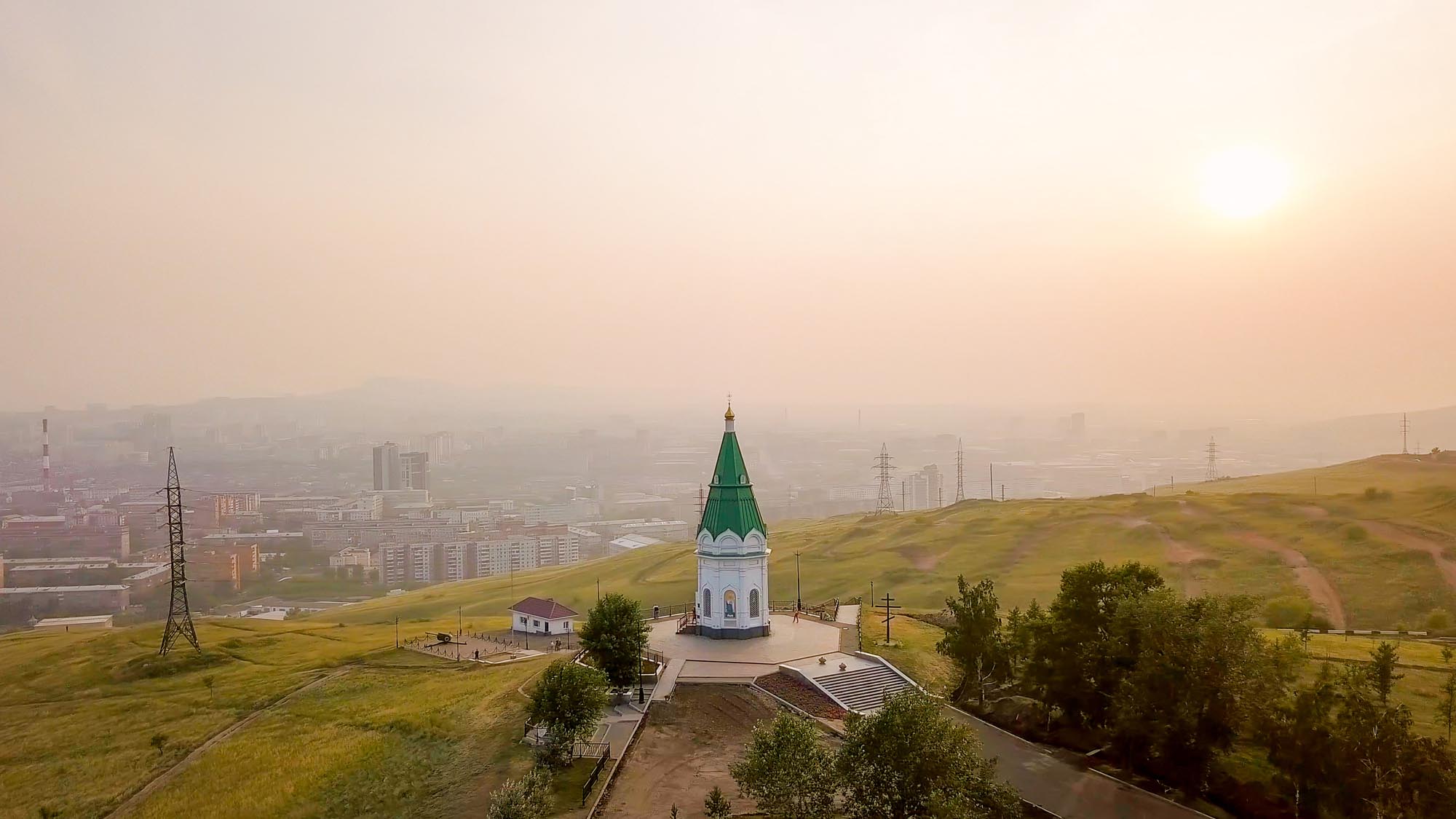
Krasnoyarsk is the most important industrial, cultural and scientific center of East Siberia, the largest port on the Yenisei River. The city was founded in 1628 by Russian explorers. In period of the Golden fever in Siberia in early XIX c. Krasnoyarsk became large merchant city. Now Krasnoyarsk is the top Eastern city in Russia with population more than million inhabitants. The most interesting places of Krasnoyarsk are: The Intercession Cathedral, mansions of local merchants, the Chapel of St. Paraskevi the Friday (XVIII c.) on the Karaulnaya (Guard) Hill, the Transsiberian Rail Road bridge (the Chapel and the Bridge are popular symbols of Krasnoyarsk imprinted on 10 rubles banknote of the Russian State Bank), architectural ensemble formed in 1980s at the arrow on place of the Yenisei River and the Kacha River confluence.
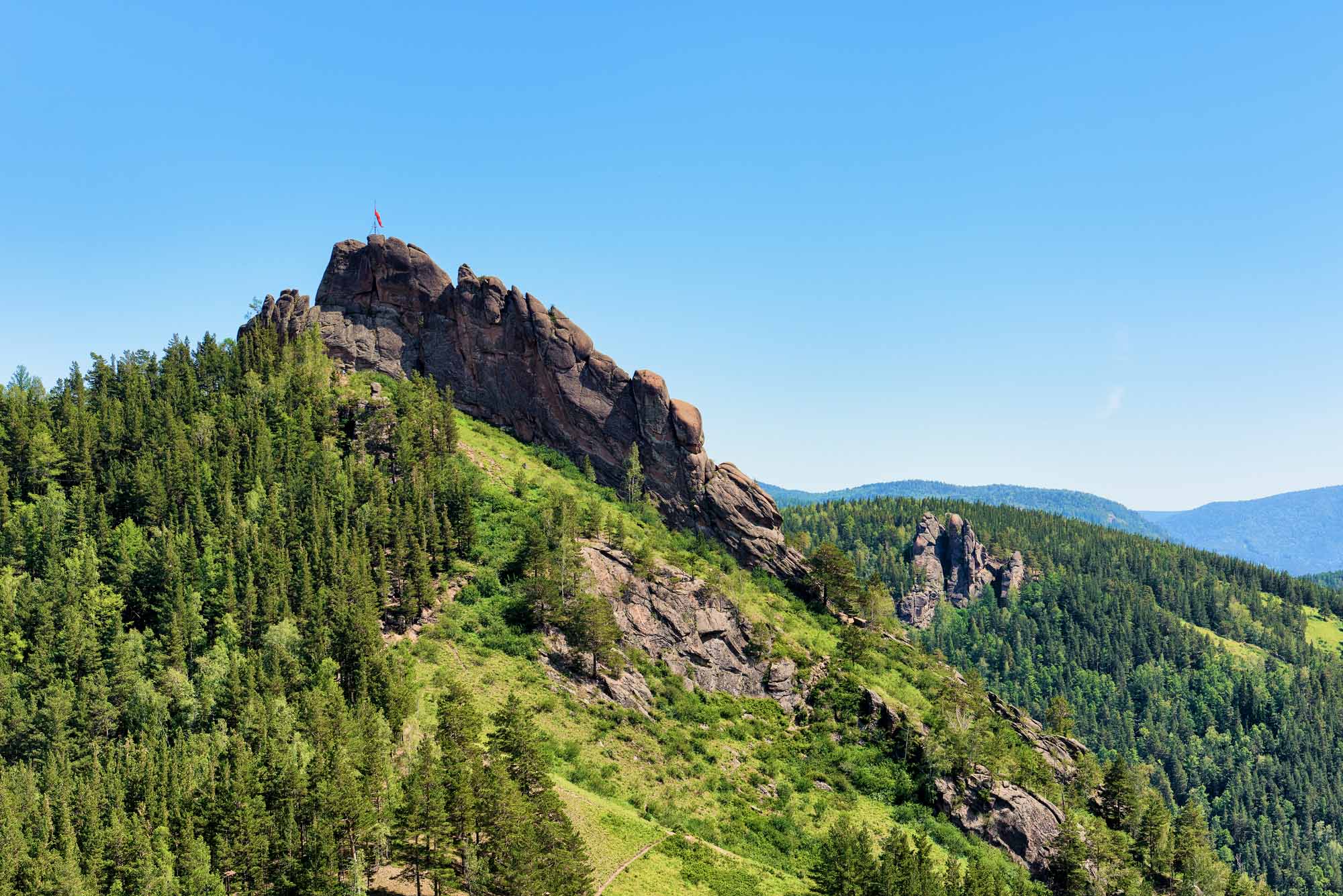
The Yenisei Pillars is the State Natural Reserve situated near Krasnoyarsk city on the right bank of the Yenisei River. State Reserve is well known for its unique natural granite structure which rise up to 100 m. The Yenisei Pillars tour is offered for clients who likes peace of mind, who likes to discover new places and picturesque views, who is trying to find unity with Nature. Right here you will get the most vivid impressions of the Krasnoyarsk city. This is absolutely impossible to do not visit the Yenisei Pillars staying in Krasnoyarsk. In contrast to the usual trips to the nature reserves you do not have to spend time and energy to reach the 1st Pillar on foot (7 km). Our vehicles will take you directly to the top of the Yenisei Pillars.

The history of this area is indissolubly connected with Norilsk Nickel and Palladium Mining and Smelting Plant built in 1930s-1950s by Gulag prisoners. You see the Norilsk Golgotha Memorial devoted to Russian, Lithuanian, Estonian, Polish and Jewish prisoners died here because of hunger and unbearable conditions of work and visit Museum of the Norilsk Industrial Area Development.
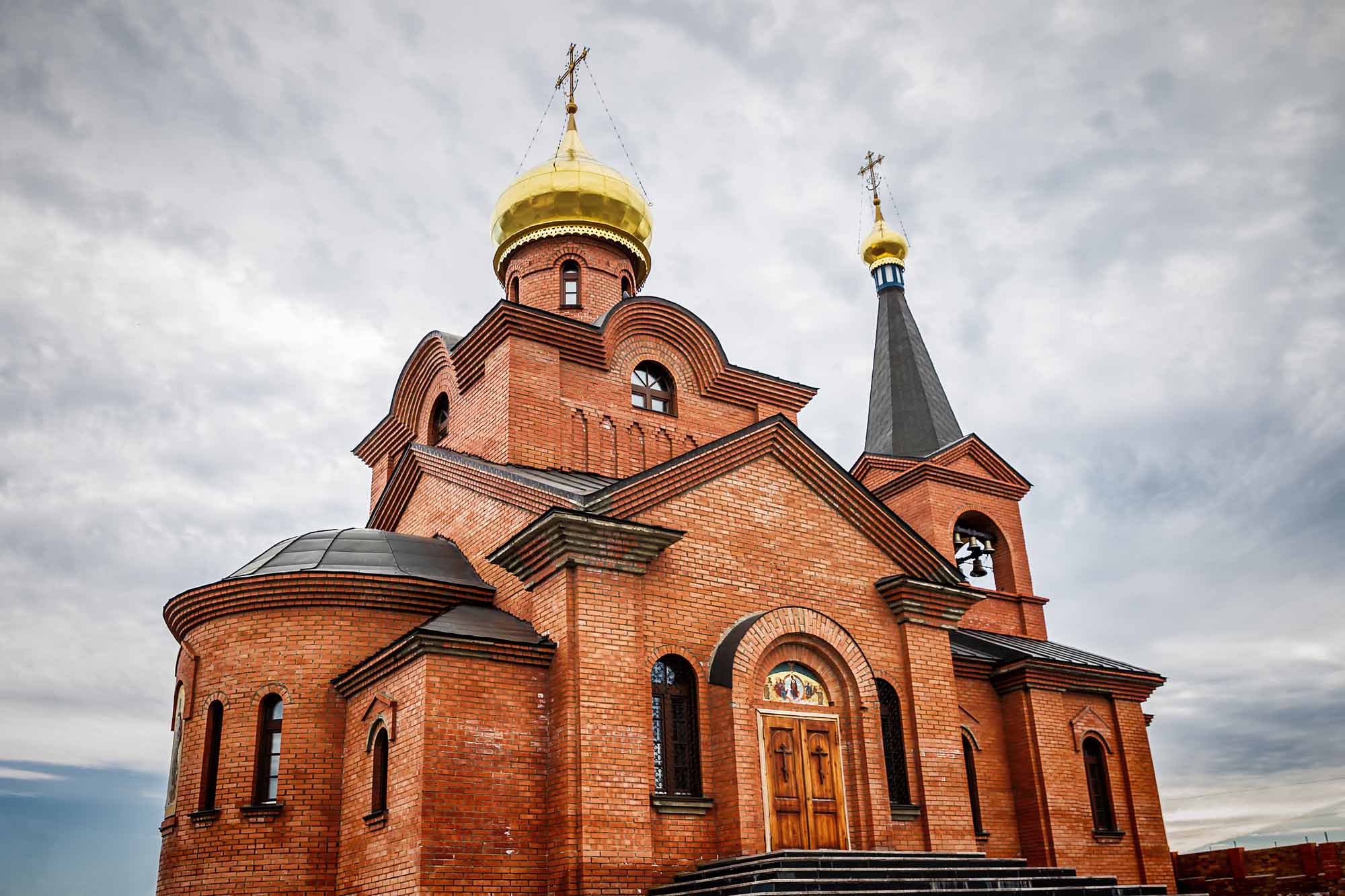
Dudinka is the top northern city in the planet. You will take part in theatrical excursion at the Taimyr Regional Ethnographic Museum presenting mode of life and culture of the indigenous Finno-Ugric peoples of the Taimyr Peninsula — Nganasans, Enets, Nenets, Dolgans and Evenks. In Dudinka city you will visit a memorial bridge devoted to all prisoners of Gulag concentration camps.

Ovsyanka village tour is offered for clients who is interesting in Russian culture and the history of Russian public ideas of XX c.. Ovsyanka village is place where the great Russian writer of the XX c. Victor Astafyev (1924-2001), one of the largest representatives of so called Village Prose (movement in Soviet literature in periods of the Khrushchev Thaw and the Time of Stagnation trying to oppose natural collectivist values of Russian village and urban individualism) was born. You will see grandmother’s house where Victor Astafyev spent his childhood and the house where he lived and worked in 1980-2001. En route you will stop at the Krasnoyarsk Hydroelectric Power Plant, one of the hugest in the world and at the panoramic platform devoted to the central work of Victor Astafyev – novel Tsar Fish (1976).
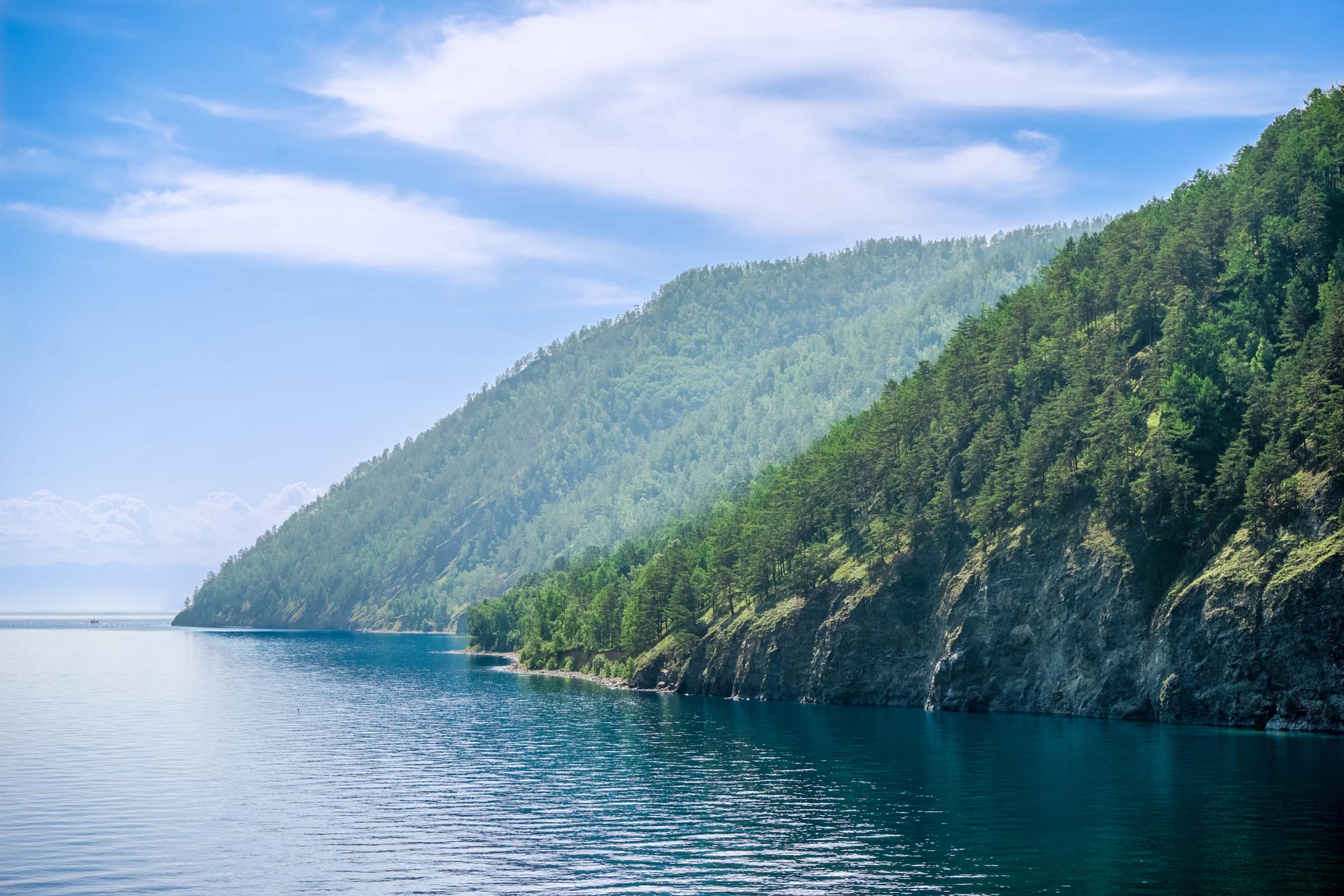
The Lake Baikal is called the Pearl of Siberia. It is a unique natural phenomenon of the Planet, the deepest lake in the world and it is estimated to contain one-fifth of all the Earth’s surface fresh water. The Limnological Museum (Baikal Ecology Museum) at Listvianka settlement (65 km from Irkutsk) acquaints you with a magnificent exhibition of the flora and fauna of Lake Baikal region and aquariums with live inhabitants of the Baikal presented. Here, for example, you can see nerpa — the only in the world exclusively freshwater small seal found only in the Lake Baikal. Scientists still can’t understand how these seals originally came to Lake Baikal located in the middle of Asian continent, hundreds of kilometers from any ocean. This astonishing species was on the verge of extinction in the second half of XX c. because of the valuable fur of cubs and now it is listed in the Red Book. In Listvianka you can also ascent by cable way the Chersky Stone panoramic platform where you will take pleasure in picturesque the Lake Baikal and the Angara River source view. Also you will see St. Nicholas Church and visit souvenir & fish market.

Olkhon Island is the largest island at the Lake Baikal and its sacral center. Shaman Stone located not far from the island administrative center Khuzhir settlement is considered one of the most important sacral places of Asia continent. Following places of interest are most popular for tourists from all parts of the world visiting the Baikal every year: Khoboy Cape, the top North point and one of of the most picturesque places of the Island with fantastic Svyatoy Nos Cape view (this view is well-known name card of the Lake Baikal); Ogoi Island located opposite the Khoboi Cape, the largest island at the Maloye More Strait where you can see Buddhist Stupa of Enlightenment; sacred Burkhan Cape (Shaman-Mount) equally worshiped by Shamanists, Buddhists and Lamaists; rocky Shara-Shulun Cape; scenic Khool Bay where the famous local omul (freshwater Arctic cisco inhabiting at the Lake Baikal) population is concentrated; Khorin-Irgee (Horse’s Head) Peninsula where Genghis Khan’s warriors are believed to have had a stopover; Khorgoy Peninsula with remnants of ancient fortifications built by the Kurykans.
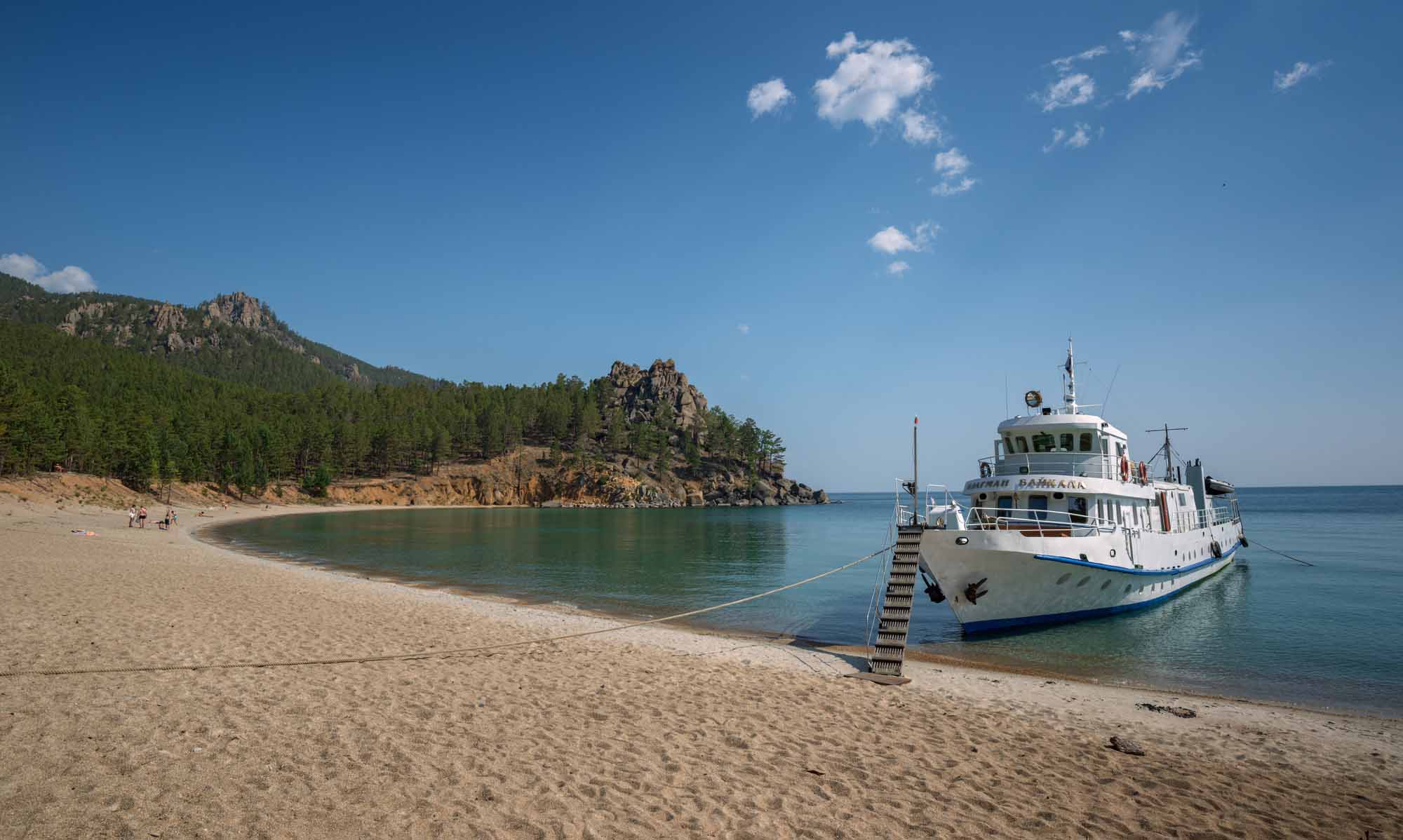
The Sandy Bay (about 35 km to the North from Bolshoye Goloustnoye settlement) is one of the most popular recreation centers at the West cost of the Lake Baikal. Well-groomed area and landscaped beach combined with cosy comfortable wooden cottages make a good impression. Surrounded on one side by rocks and beautiful Siberian taiga and on other side by the Lake Baikal recreation center offers its guests accommodation in one of the most beautiful places at the lake: the taiga slopes of the Primorsky Range which are more than 20 million years, a lot of large and small rocks, cedars, larches, clean beaches of fine quartz pebbles. Here you can meet wild animals, really touch the virgin nature, plunge into the holy waters of the sacral Lake Baikal. Every day you can make wonderful excursions receiving a lot of bright emotions and impressions. Special physical training is not required. A professional guides will not only show you these unique places but also tell you a lot of interesting facts about local nature and inhabitants.
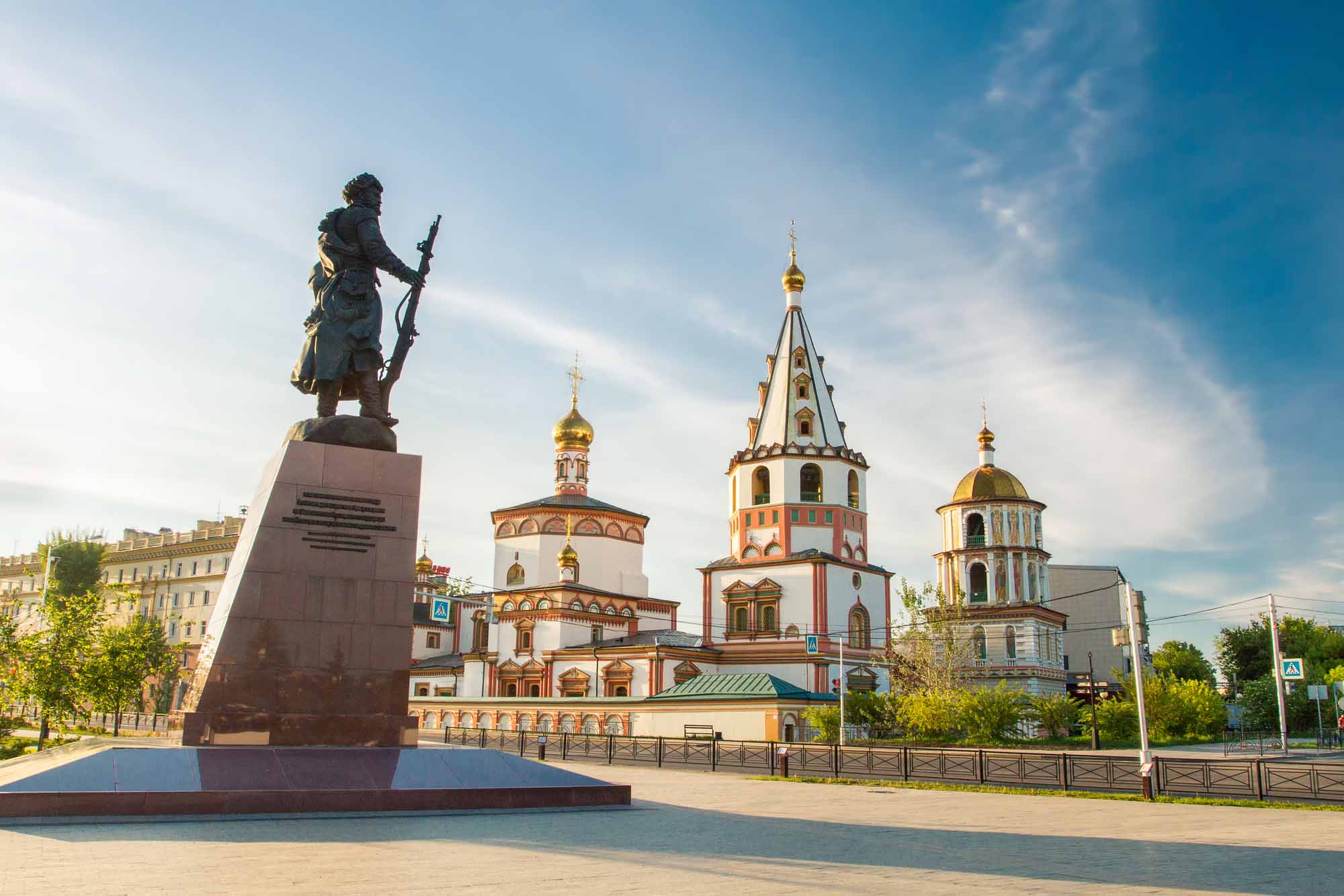
Founded in 1661 in picturesque bank of the Angara River as a small settlement Irkutsk is one of the oldest cities in Eastern Siberia now and one of the largest administrative, scientific, educational and industrial center, the main gate for tourists visiting the Lake Baikal area. We recommend you to visit the historic city center, the place where a small settlement (fortress) was founded in 1661 by the Cossacks, the Angara River Embankment and to see numerous architectural monuments (among them one of the oldest stone buildings in the city — the Church of the Saviour erected in 1706 in the territory of not survived Irkutsk Kremlin), the Our Lady the Sign Nunnery noted for one of the most beautiful Siberian cathedrals and graves on its territory (some Decembrists exiled in Irkutsk, Gregory Shelikhov whose expedition to Alaska in the 1783-86 got serious development of Russian America off the ground, great Russian writer of XX c., representative of so called Village Prose, energetic fighter for the Lake Baikal ecology Valentin Rasputin, the first bishop of Irkutsk and patron of Siberia St. Innocent of Irkutsk). The first in Russia monument to admiral Alexander Kolchak was put in 2004 not far from the Nunnery at the place where one of the main leaders of anti-Bolshevik “white movement”, «Supreme Ruler and Commander-in-Chief of All Russian Land and Sea Forces» was shot down in February 1920. You will visit so called District-130 (Irkutsk Sloboda) — specially created area of historic buildings in the Southern part of Irkutsk city center with several dozens wooden monuments of architecture and history restored and anew built.
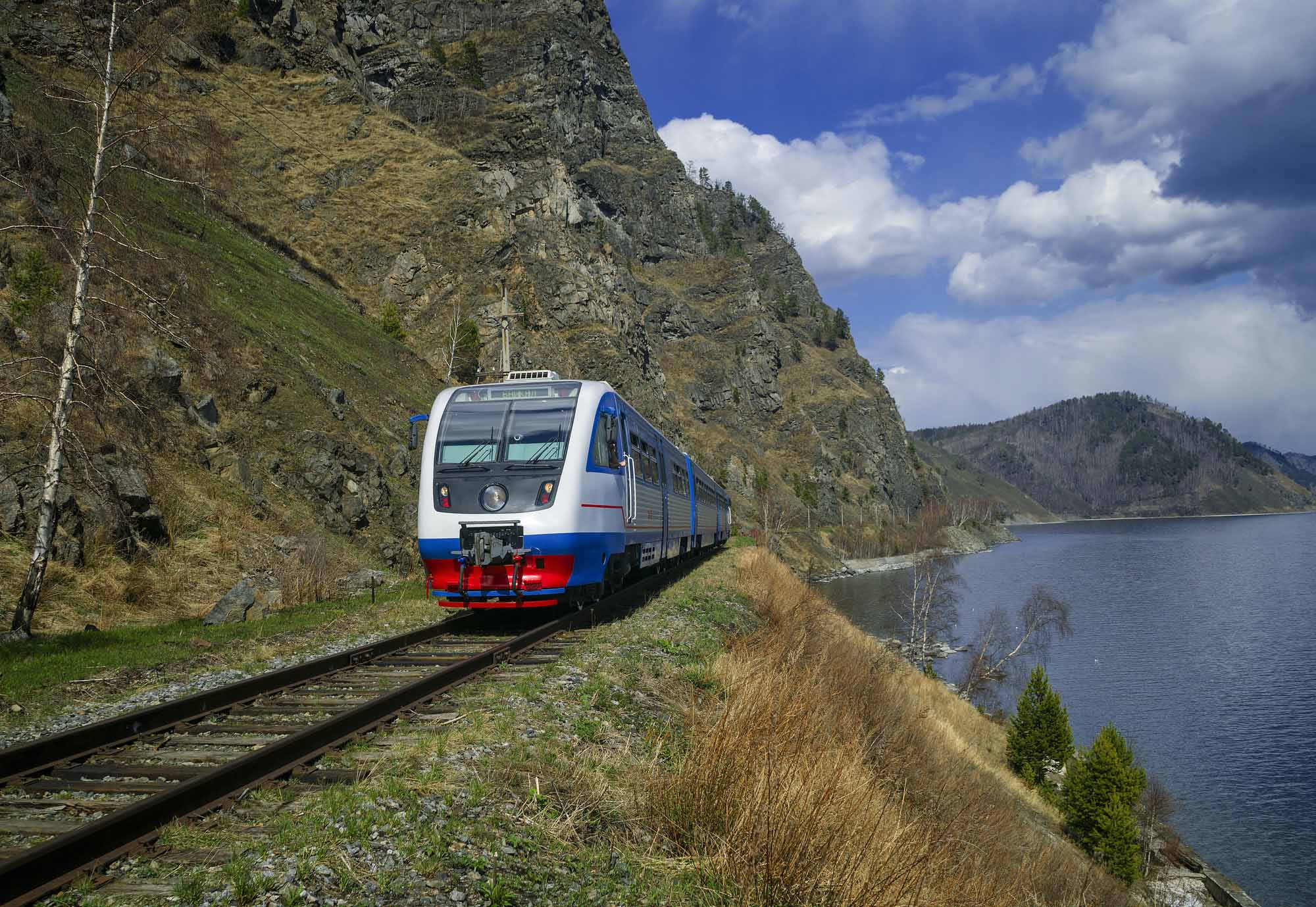
Circum Baikal Rail Road runs along the Northern shore of the Southern extremity of the lake. Sometimes called a unique achievement in engineering the Circum-Baikal Rail Road is one of the most picturesque sights of the area around Lake Baikal. Until 1949 the Circum-Baikal railway was part of the main line of later on, however, a duplicate section of the railway was built. Now Circum Baikal Rail Road is the largest open-air museum in the World. Sometimes called a unique achievement in engineering the Circum-Baikal is one of the picturesque sights of the area around Lake Baikal.
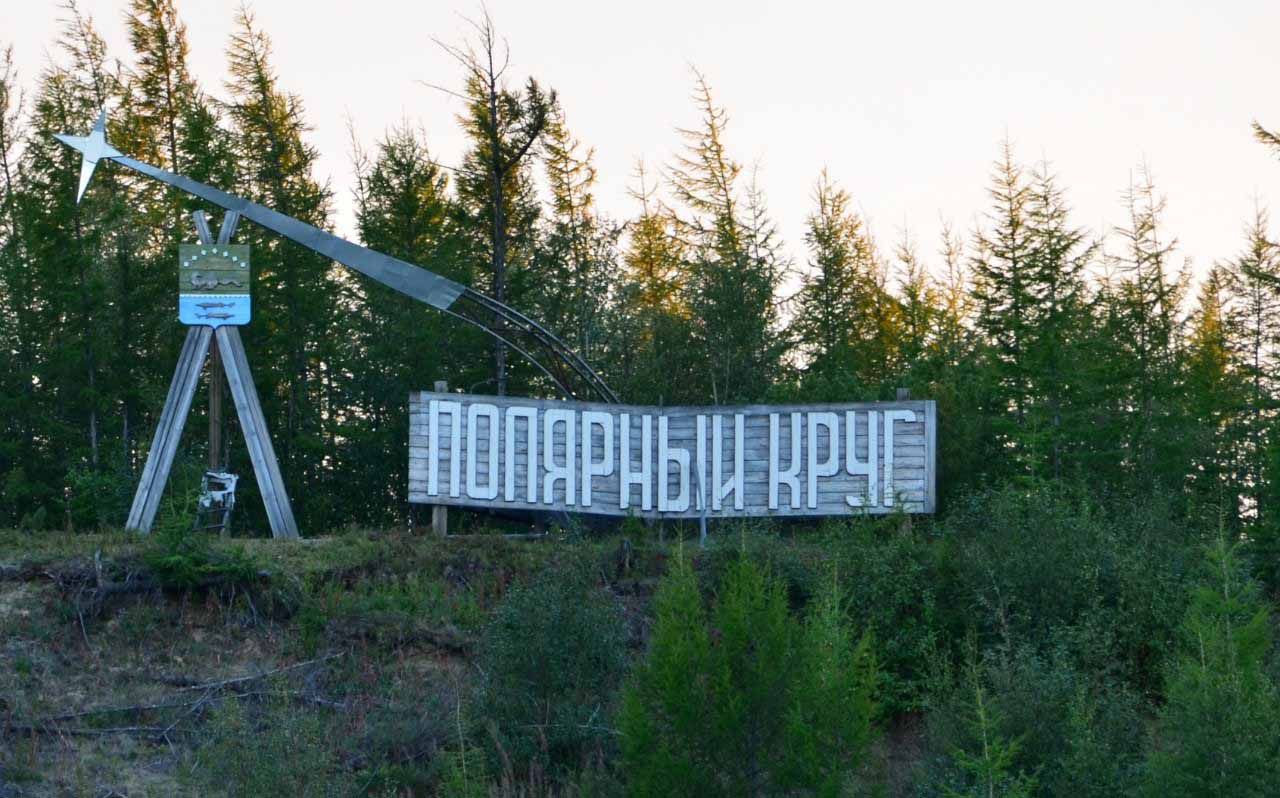
The Polar circle is an imaginary line on the Earth and a parallel in the northern hemisphere with the latitude of 66°33’38». During the winter solstice (December 21-22) northward of the Polar circle the sun does not rise at all and during the summer solstice (June 21-22) period the sun does not set. The Polar circle is constantly moving, its geographic location is not stable. In fact, it moves approximately for 2 meters during a day and almost for 100 meters during one year. A polar circle position can be easily determined any time with the help of modern technologies. During the trip of the Yenisei and the Lena cruises your ship will cross the Polar circle. On the initiative of Zhigansk citizens (this town is the nearest one to the Polar circle at the Lena River) on the left bank of the Lena River a symbolic sign titled “The Polar circle” was put.

Tiksi town located not far from the Lena River delta is one of the most important points at the Northeast Passage. The name of Tiksi is translated from the Yakut language as a “place of meeting, mooring place”. Tiksi appeared on the map in the middle of 1930s. Navigable period here is extremely short — 2,5 months. During 9-10 months the Laptev Sea is glaciated; the ice thickness is up to 1,5-2 m or more. In winter there are polar nights: the sun seems to forget about this area. Darkness arrives for several months. Sometimes one can observe Polar lights in the dark sky of the night. In summer there is a period of white nights. The midnight Yakut sun gives its smile almost 24 hours a day. Being one of the most beautiful towns of Yakutia in the Soviet period Tiksi at present feels significant economic difficulties.
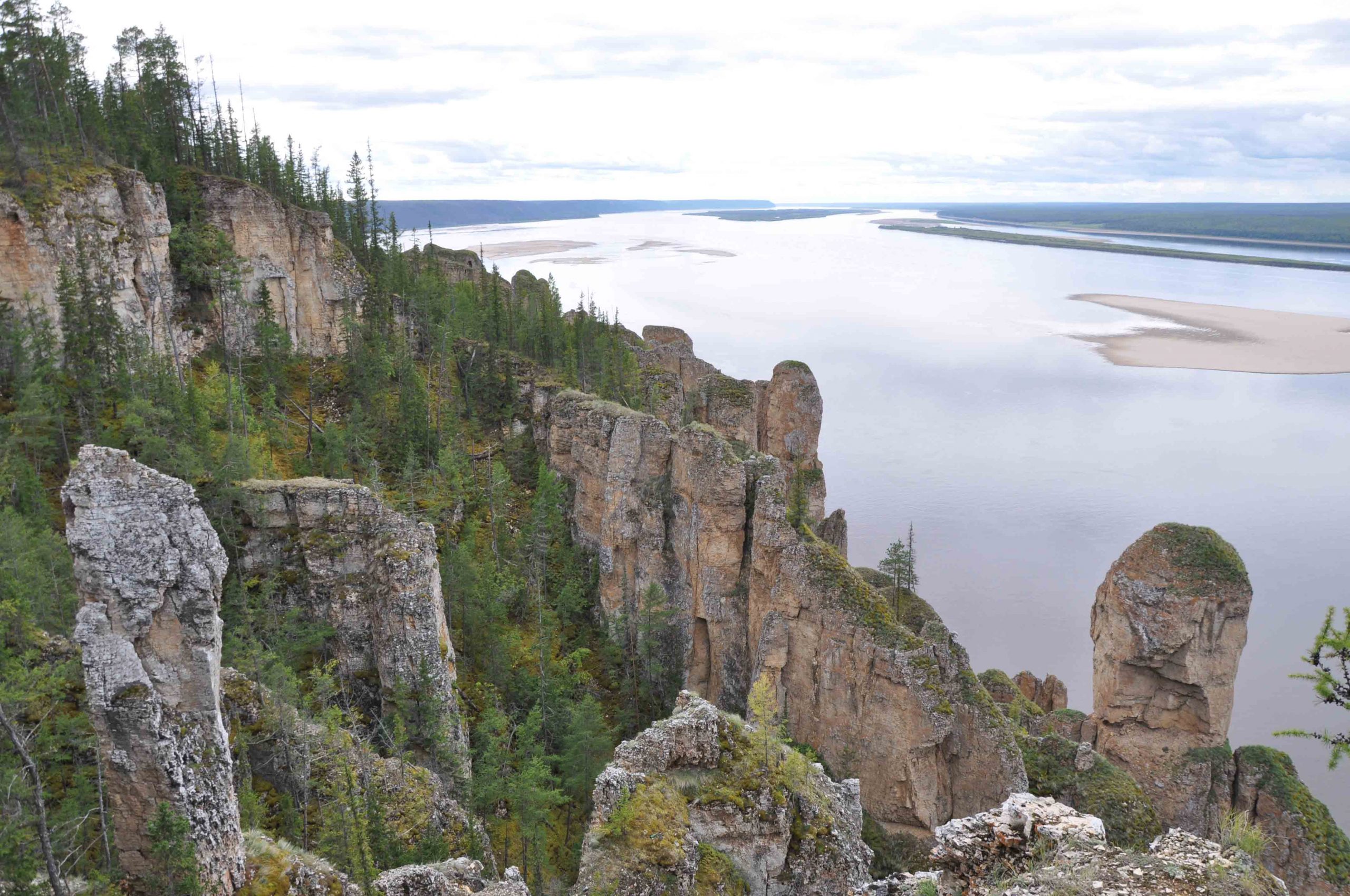
At the Lena Pillars National Natural Park you can watch the unique natural phenomenon — abrupt rocks in the form of columns in height up to 200 m, stretching along the river for 80 km. You will have a chance to ascent to the top of columns and to see fantastic view of virgin Siberian taiga from panorama platform.
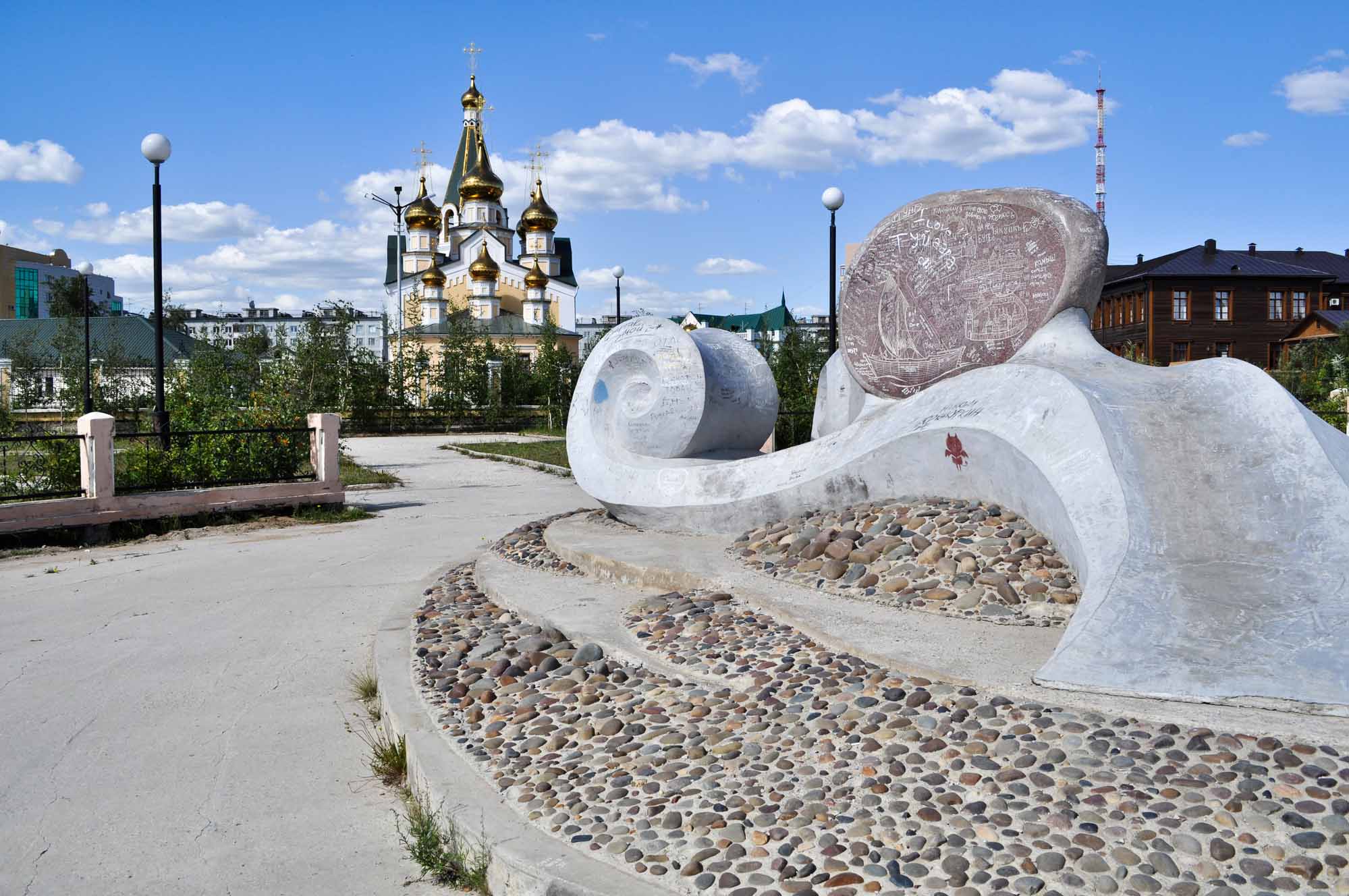
Yakutsk, the capital of the autonomous Sakha (Yakutia) Republic was founded by Russian cossacks on the bank of the Lena River in 1632. In Soviet period practically all historical buildings of the city (mostly wooden) were dilapidated, burned or dismantled. The Old City historical and architectural complex is a quarter in the city centre at the territory of which buildings of old Yakutsk were rebuilt. Among them are the Trading Arcades, the building of Russian-Asian Bank, the Church of the Transfiguration, the tower of the Ostrog (first Russian fortress founded in XVII c.). The Museum of History and Culture of the North peoples founded in 1887 is one of the most ancient and interesting museum of Siberia and Russian Far East. The museum houses the collection of more than 100,000 unique items illustrating the history and the traditional culture of Yakuts and also peoples and ethnic groups of the North.